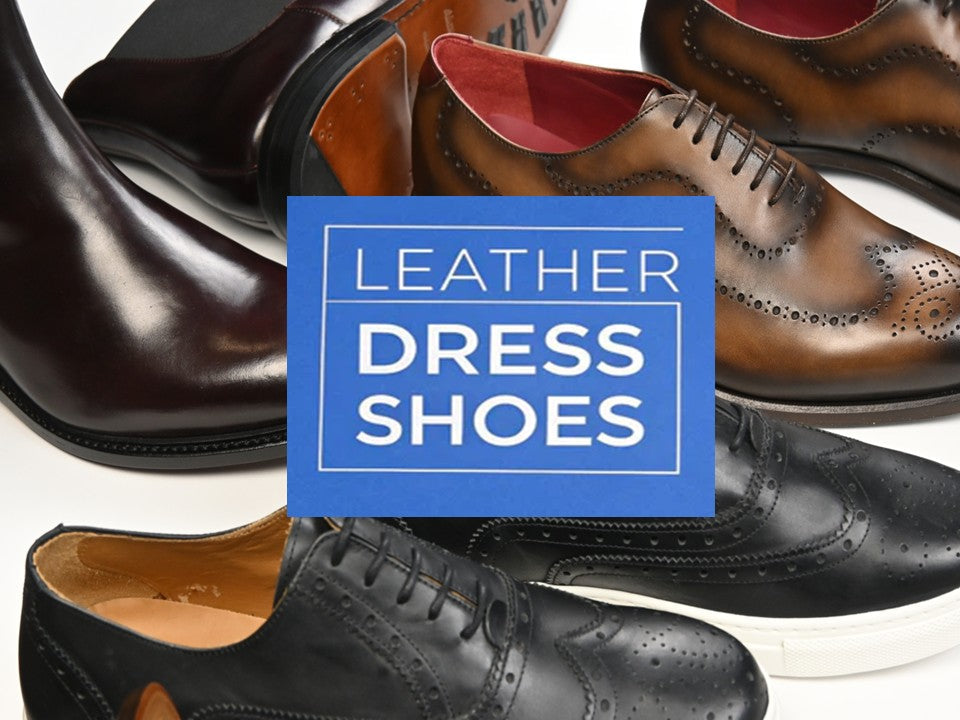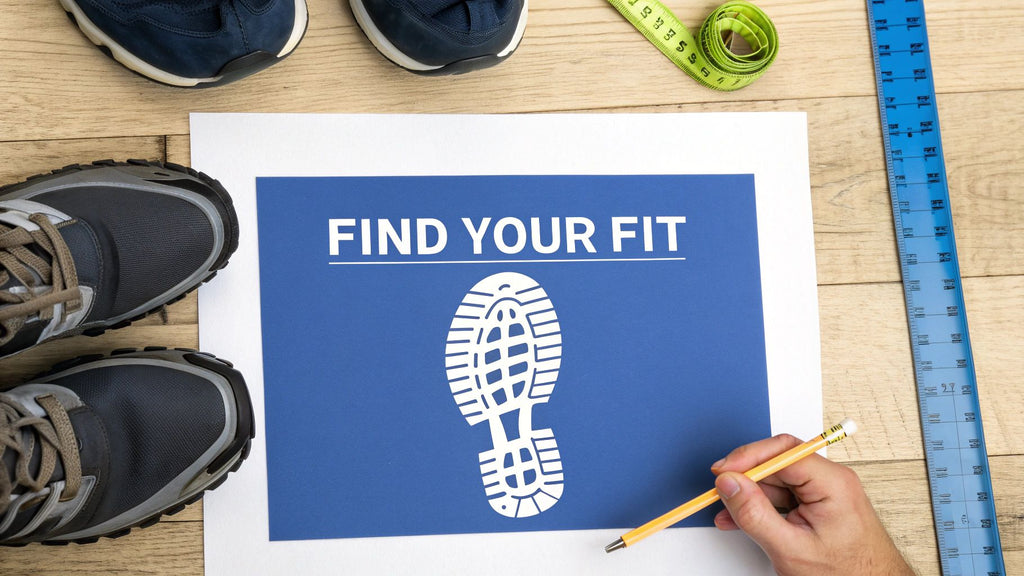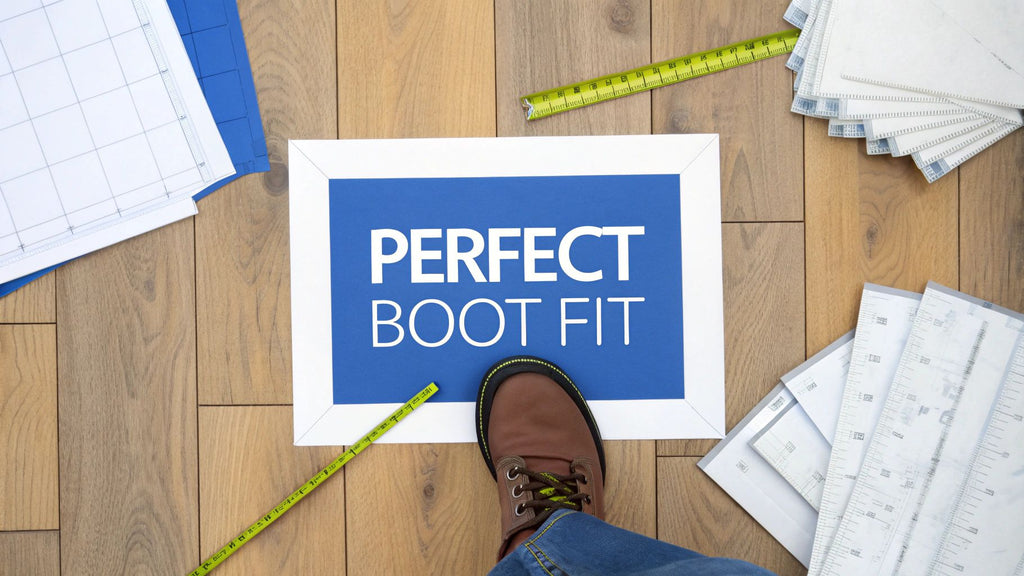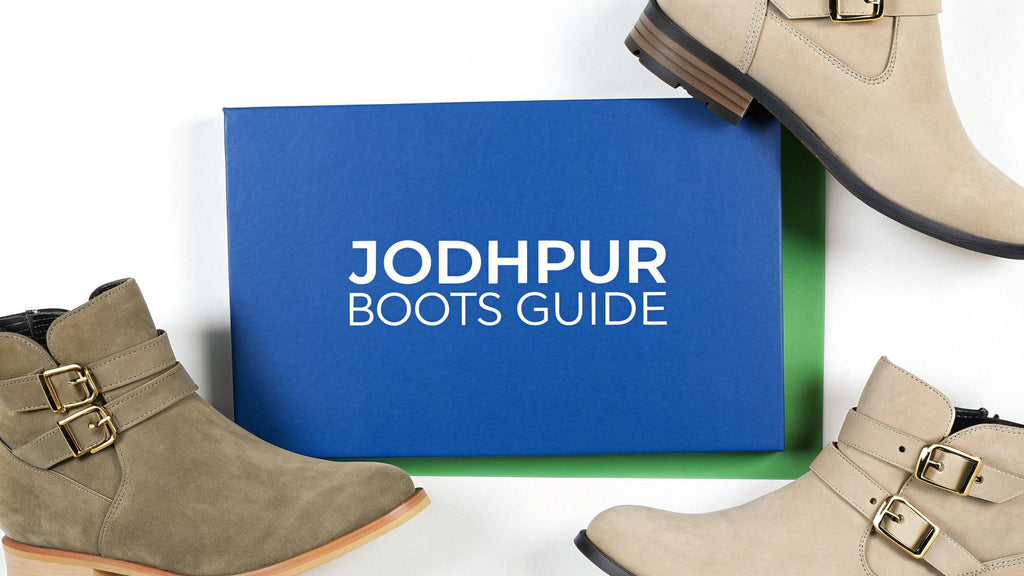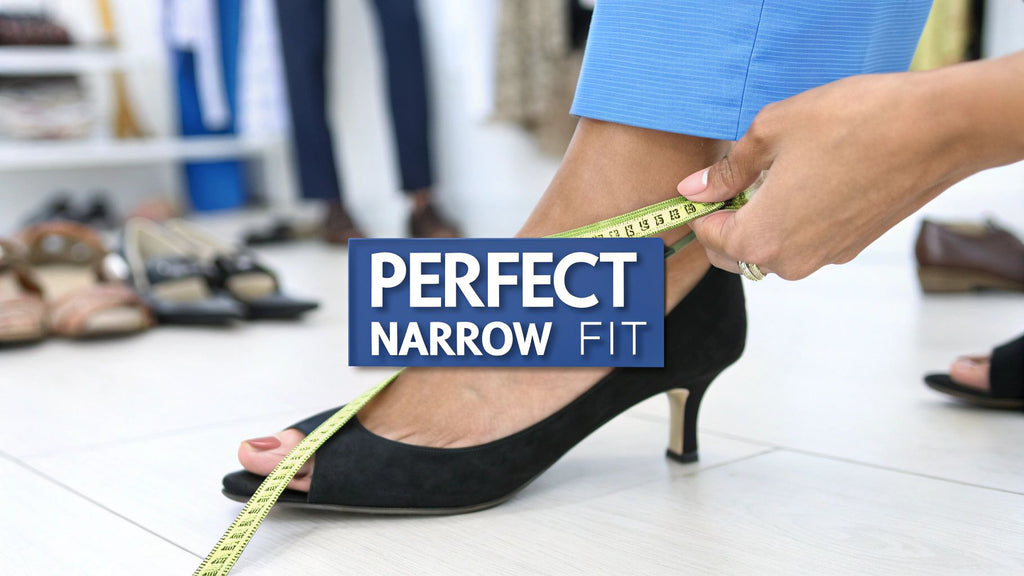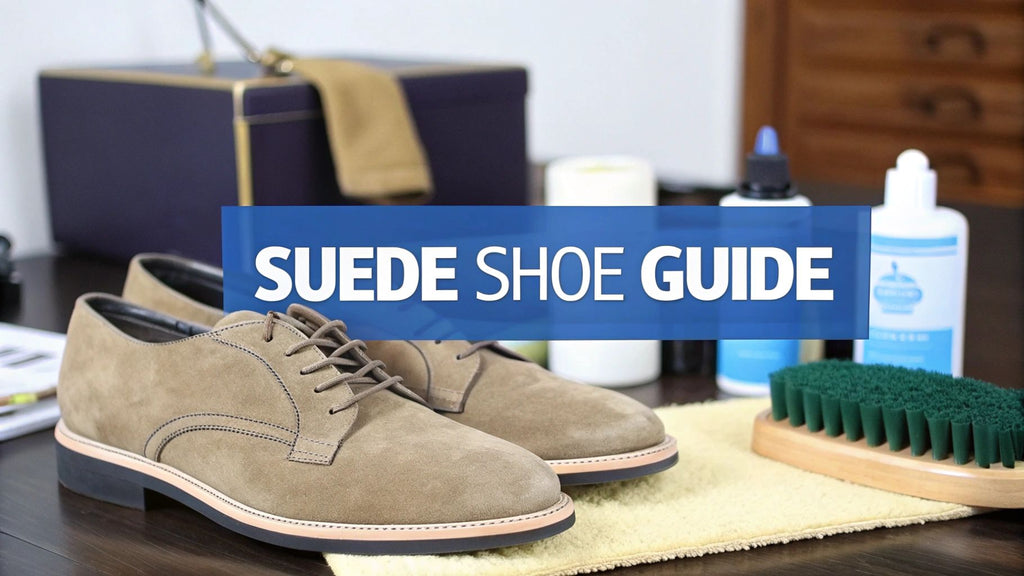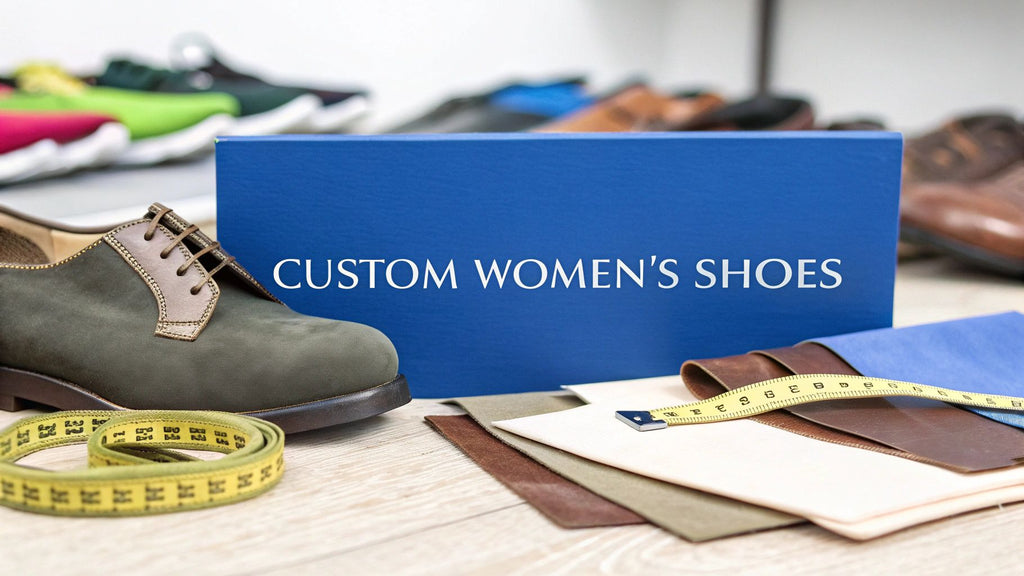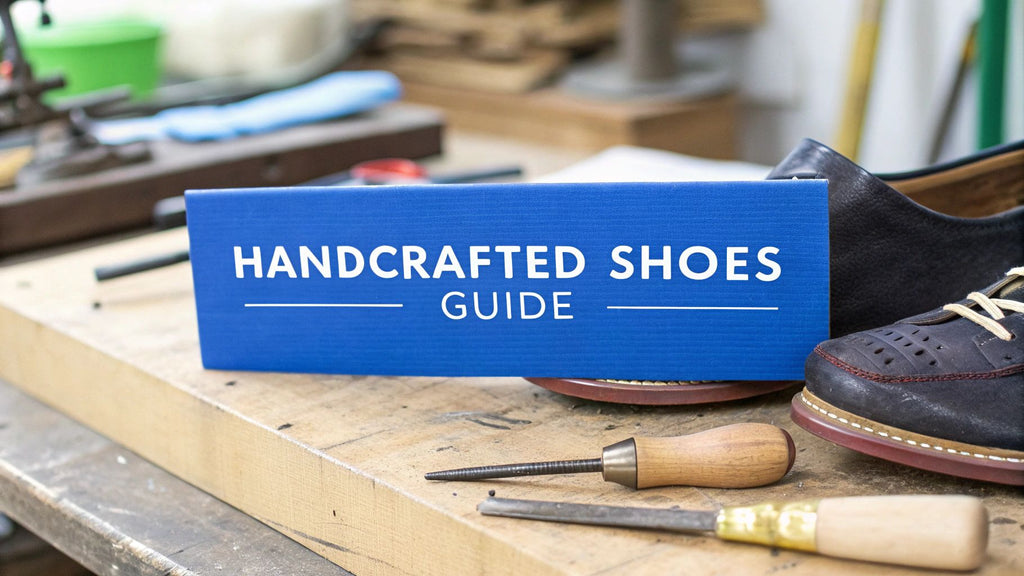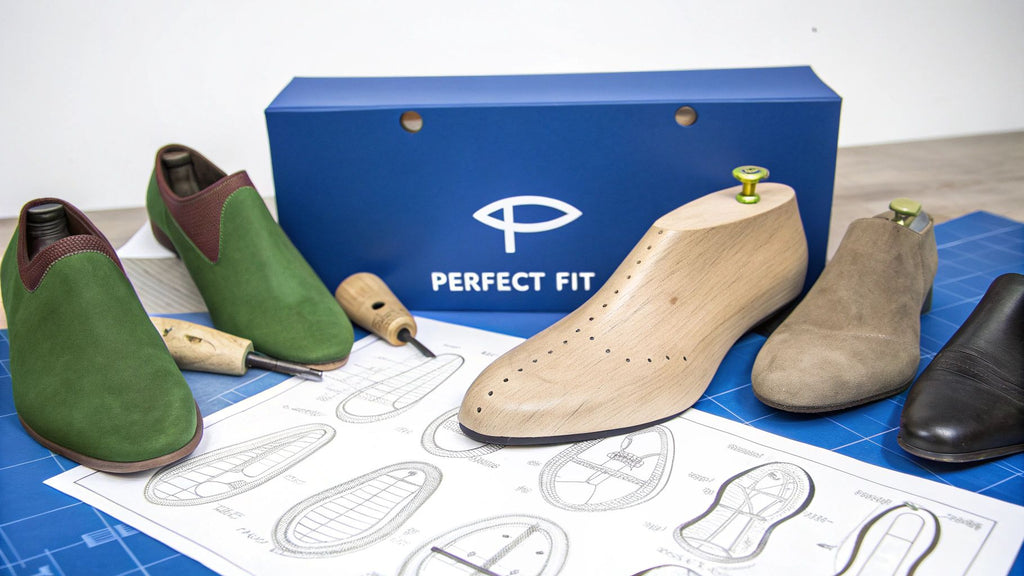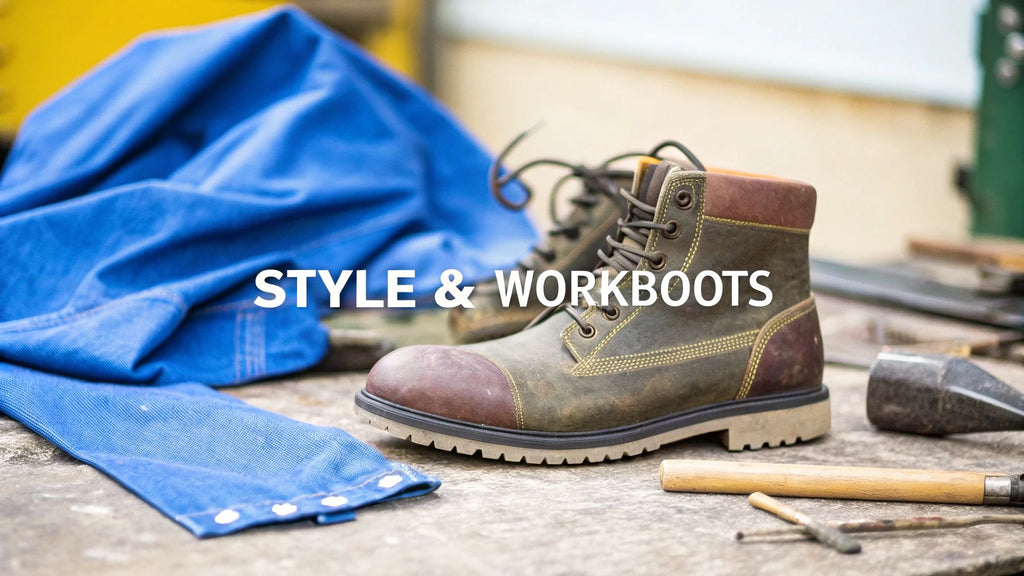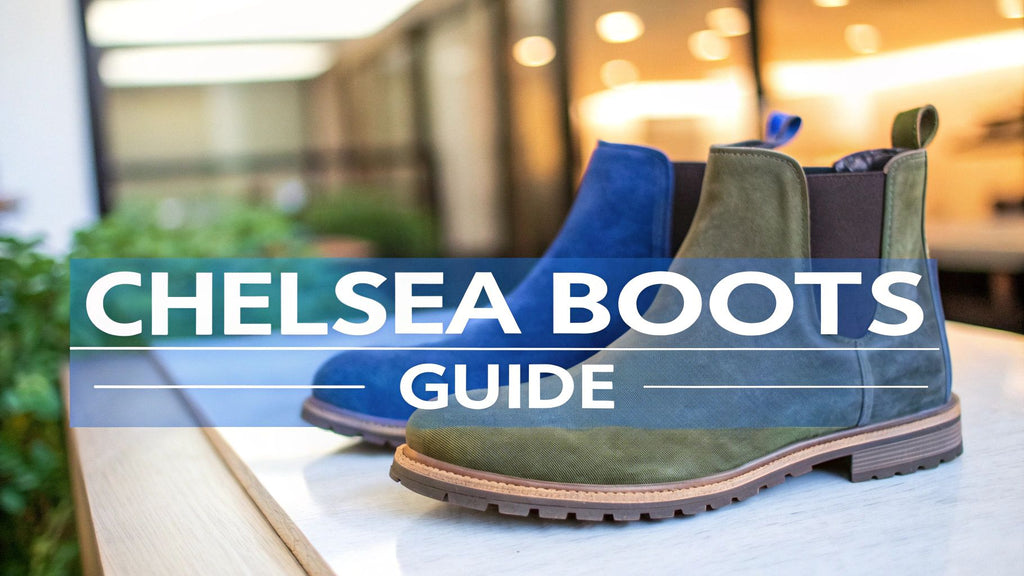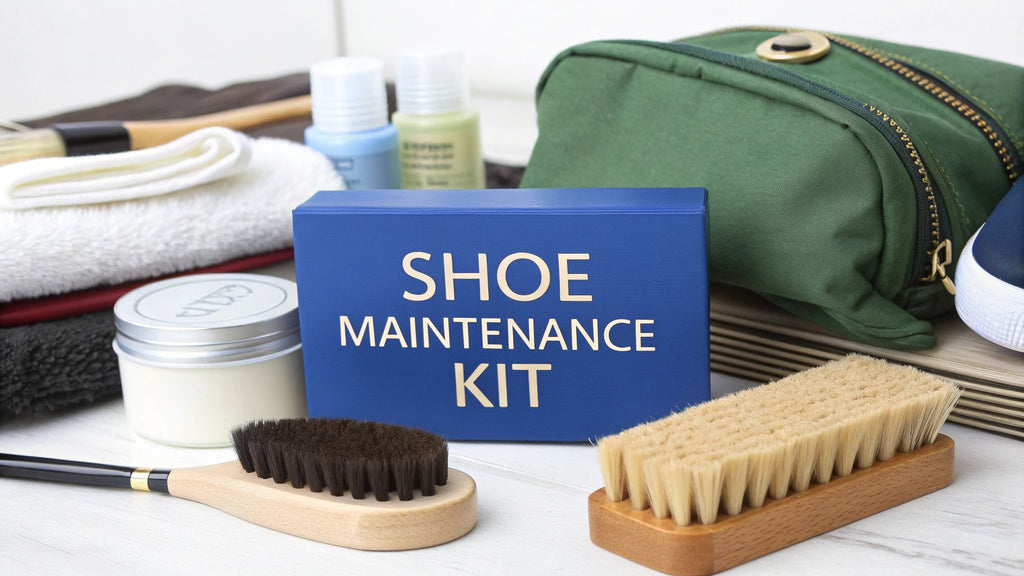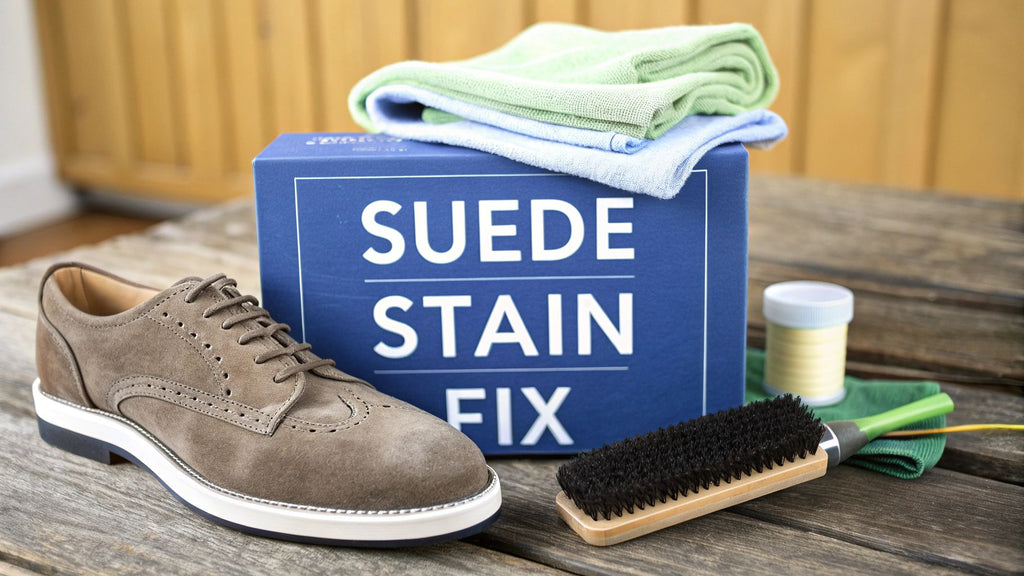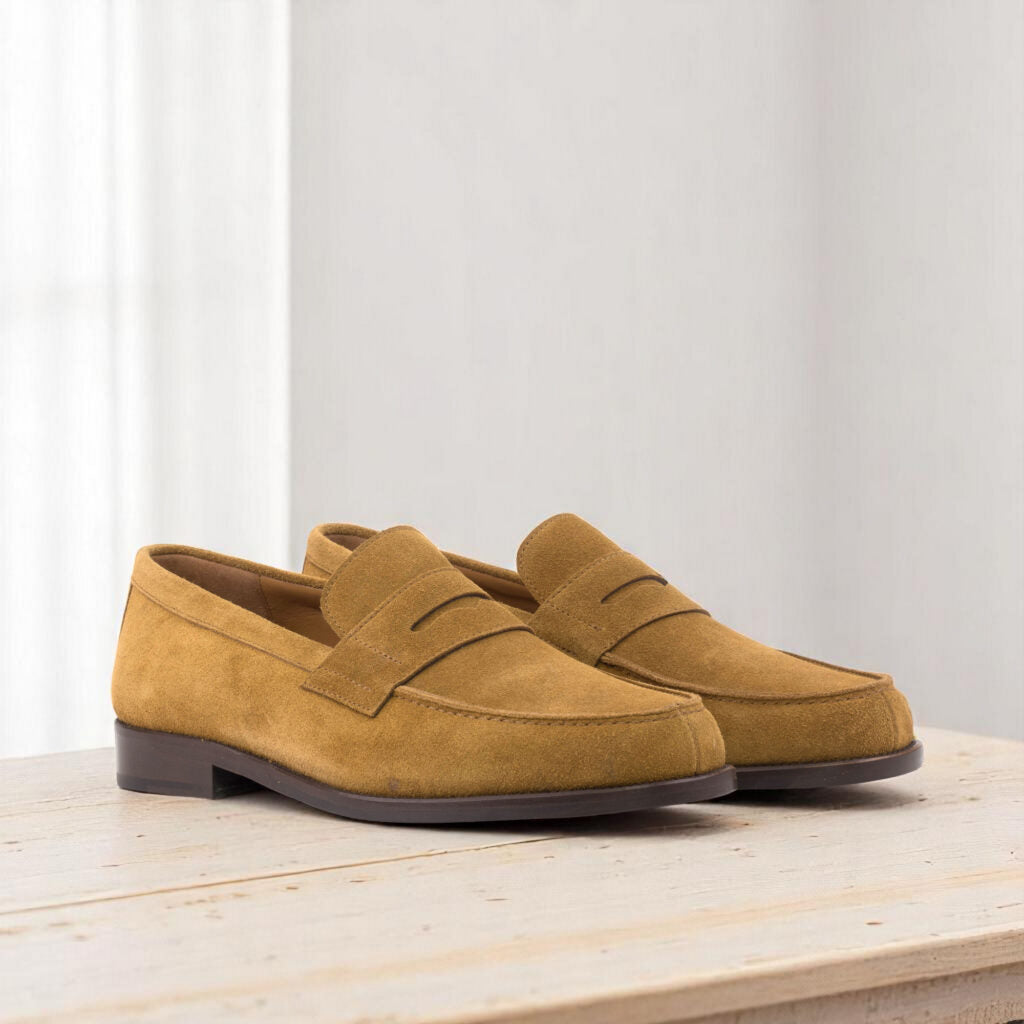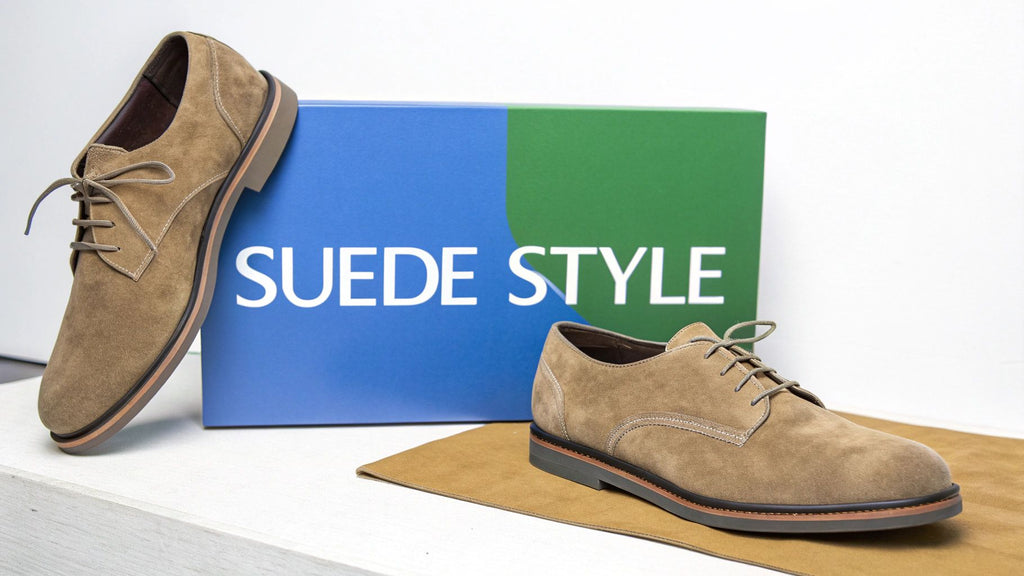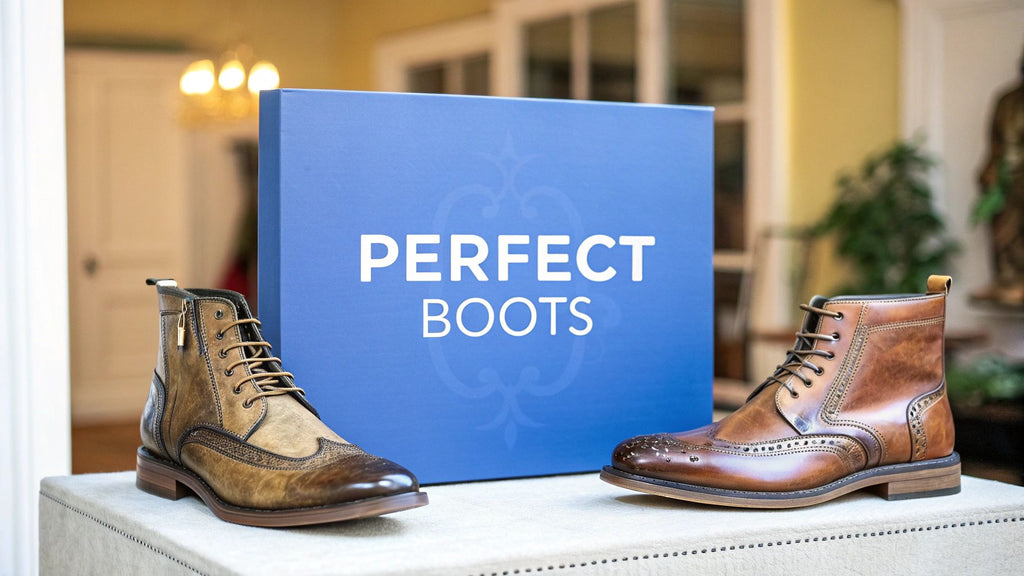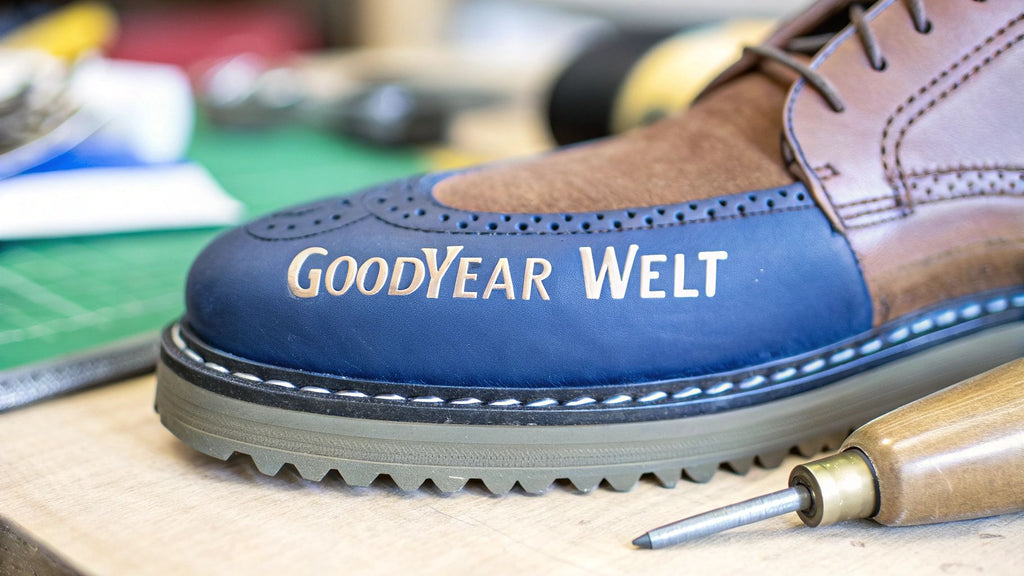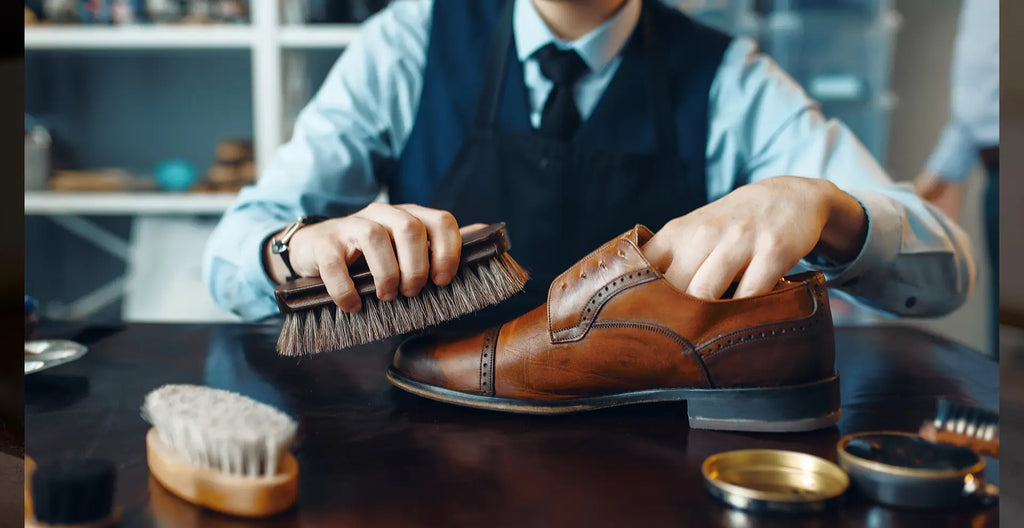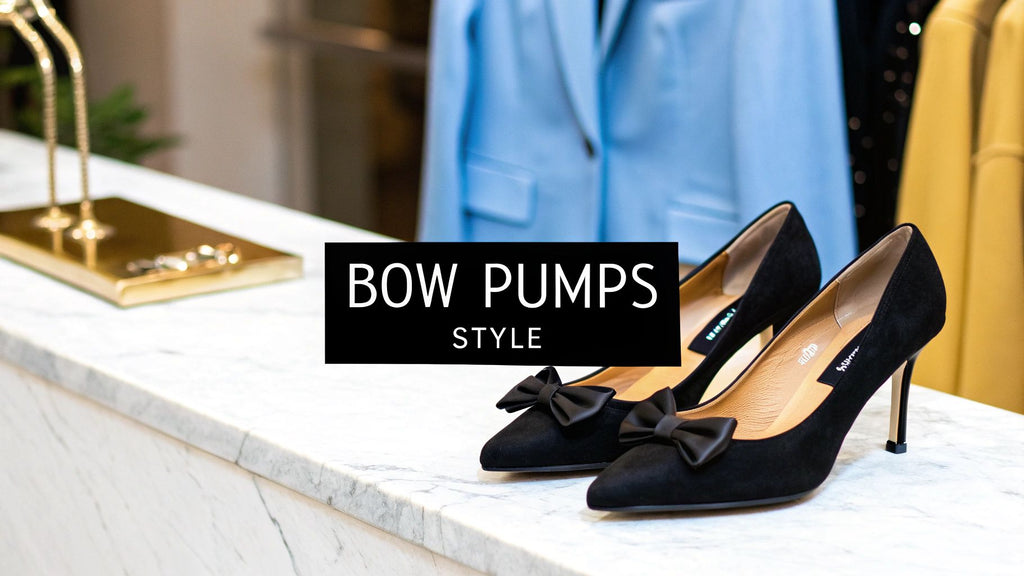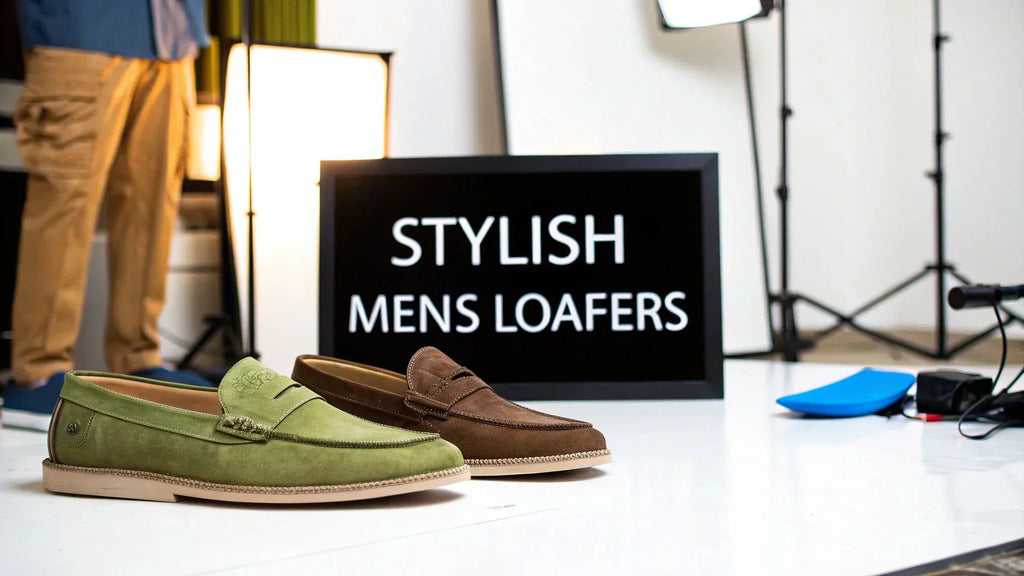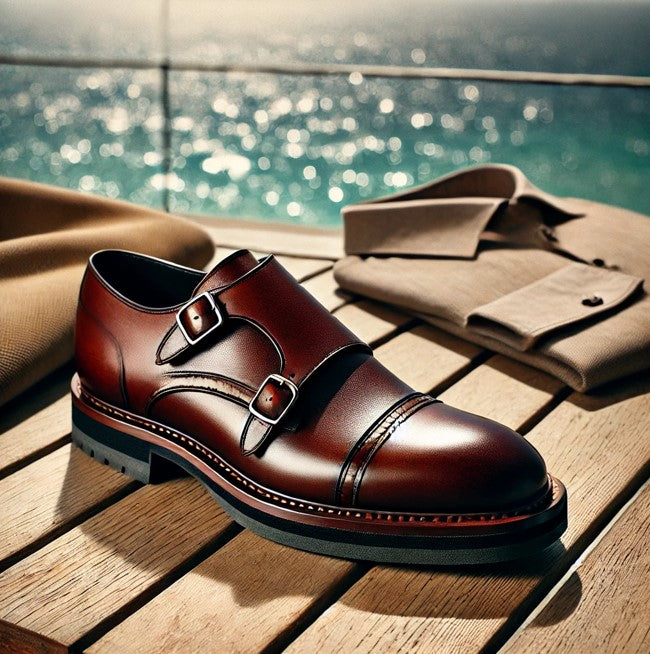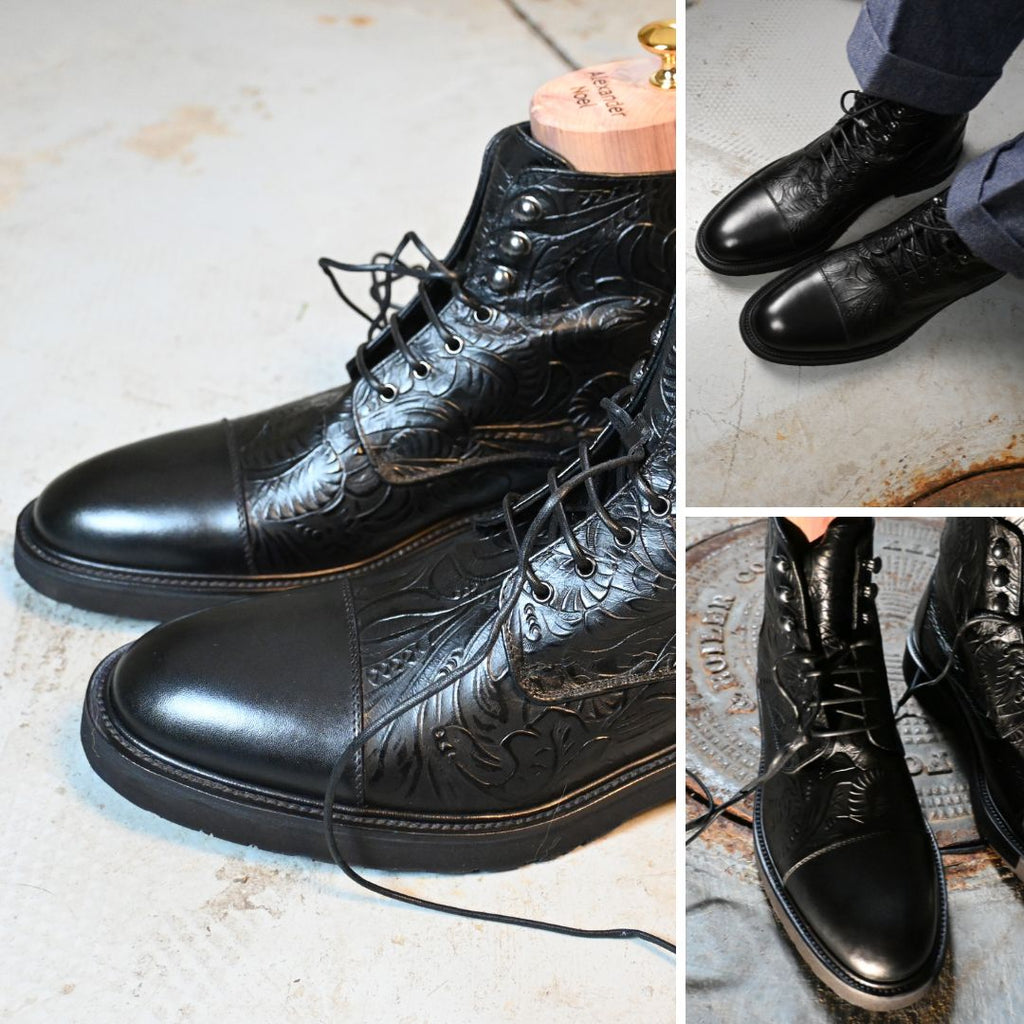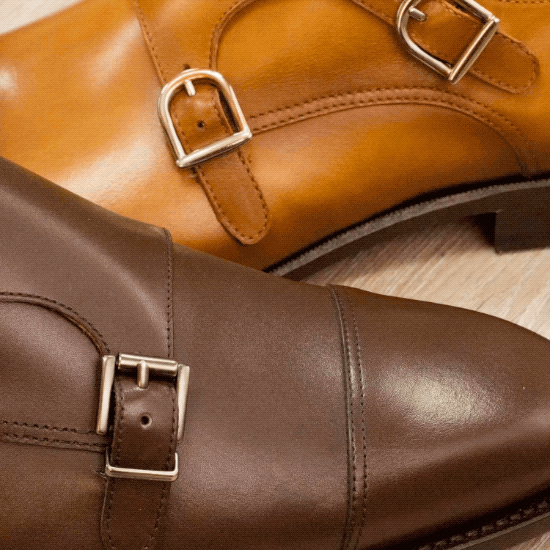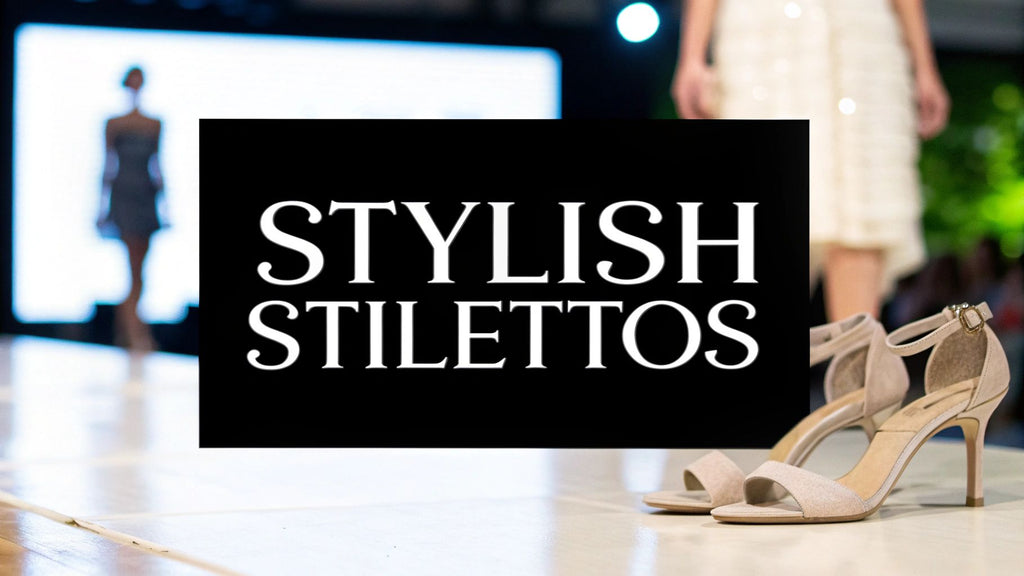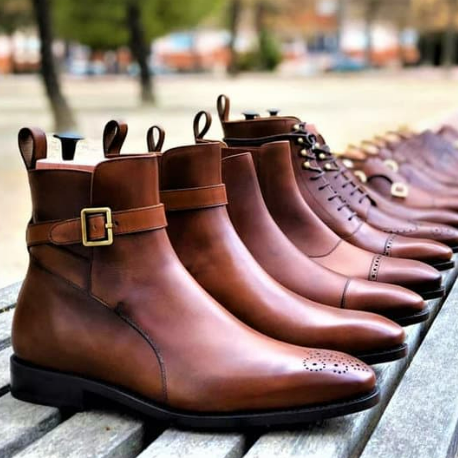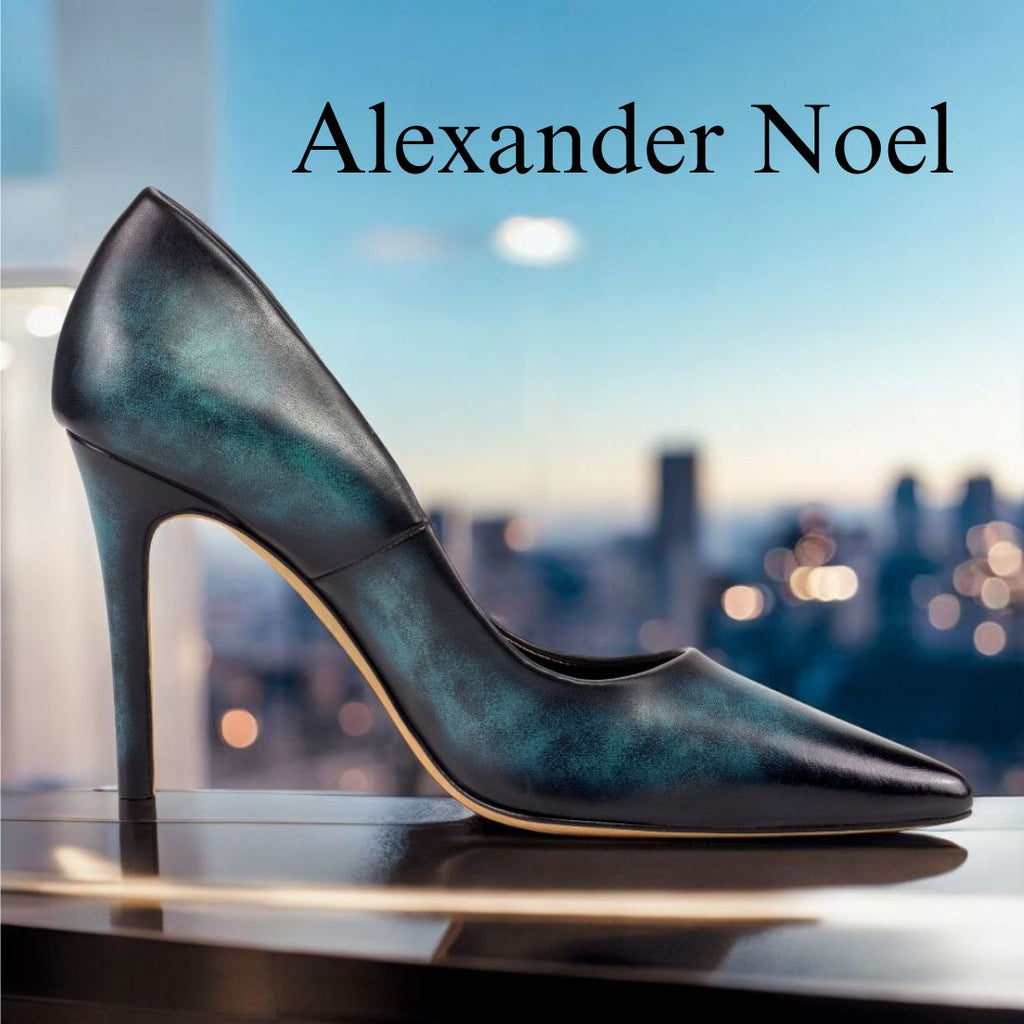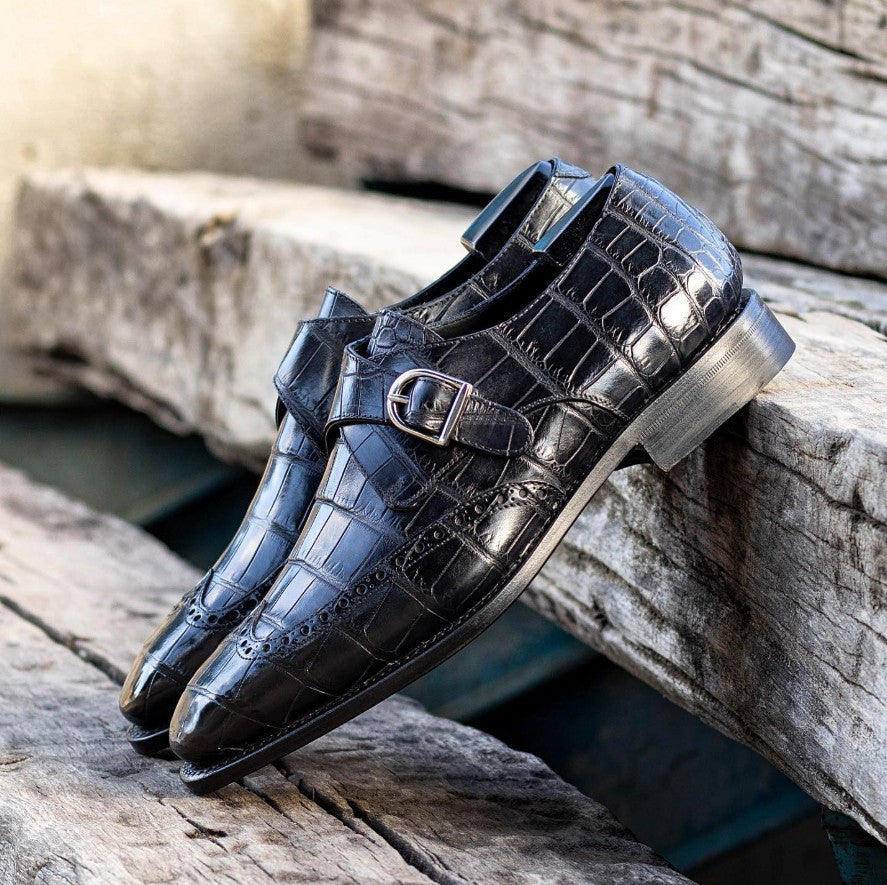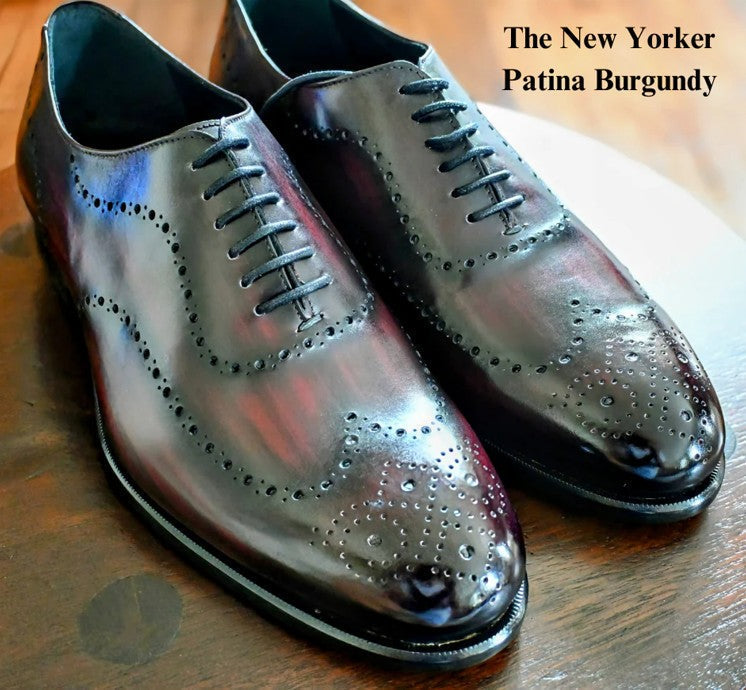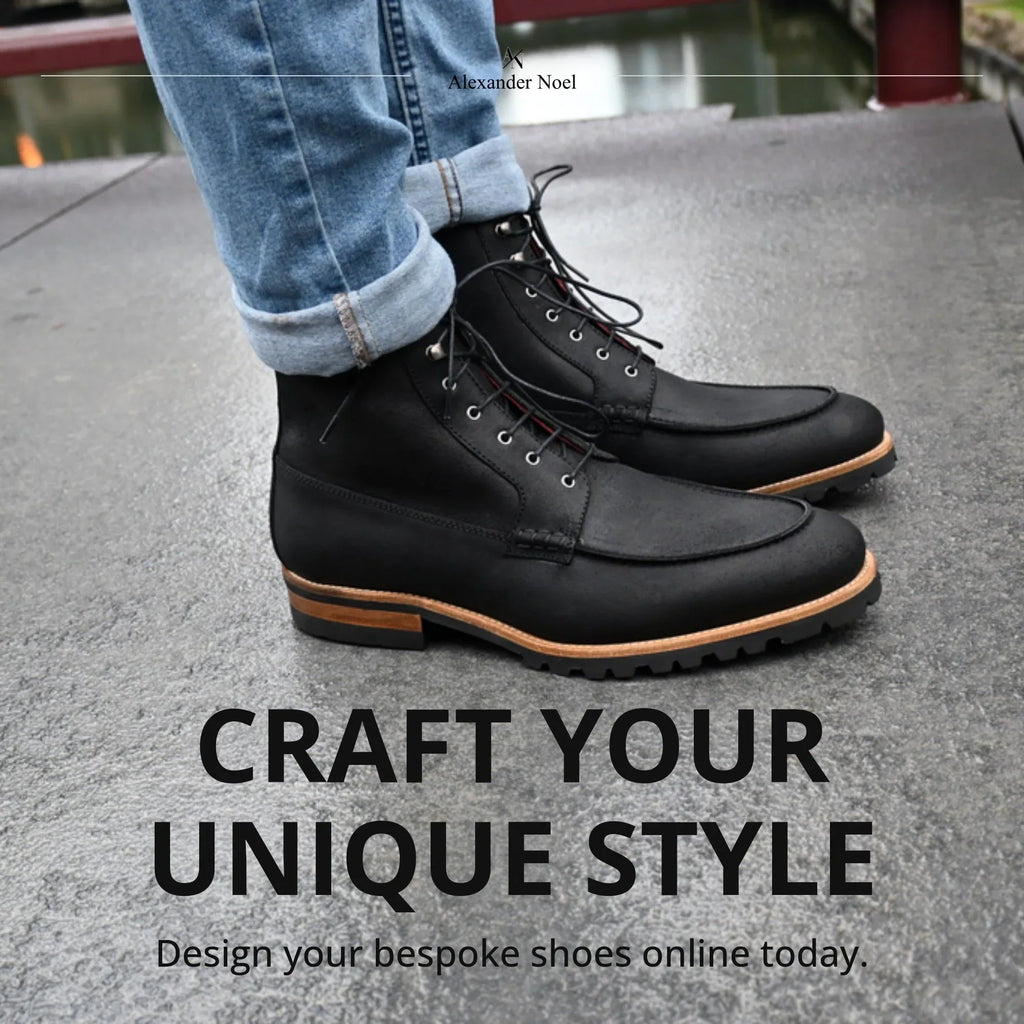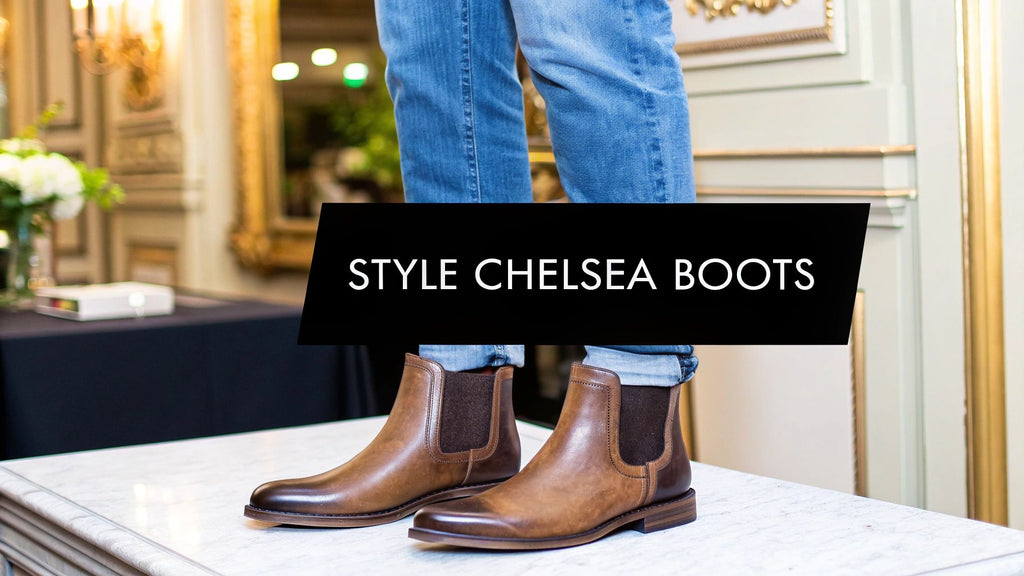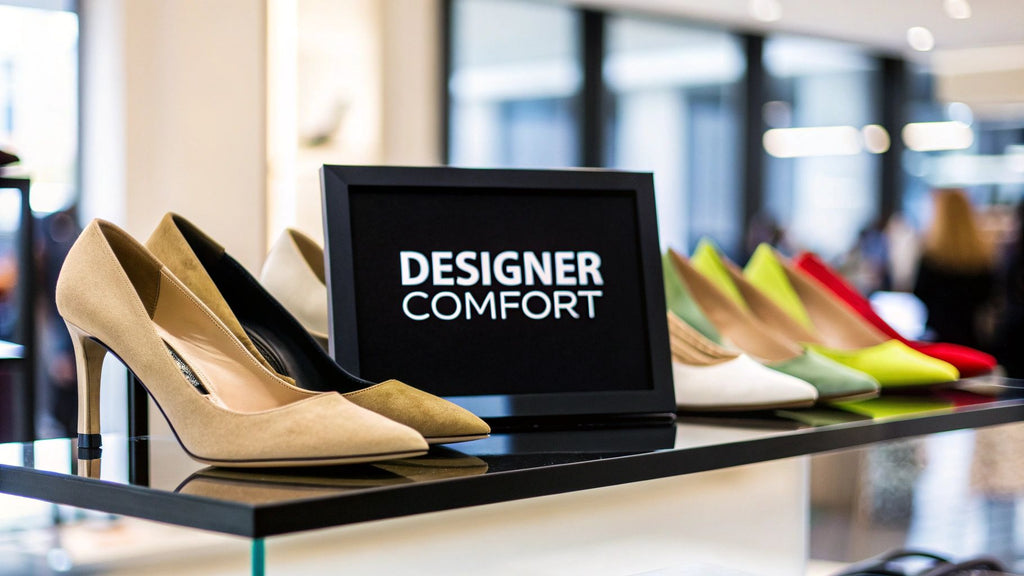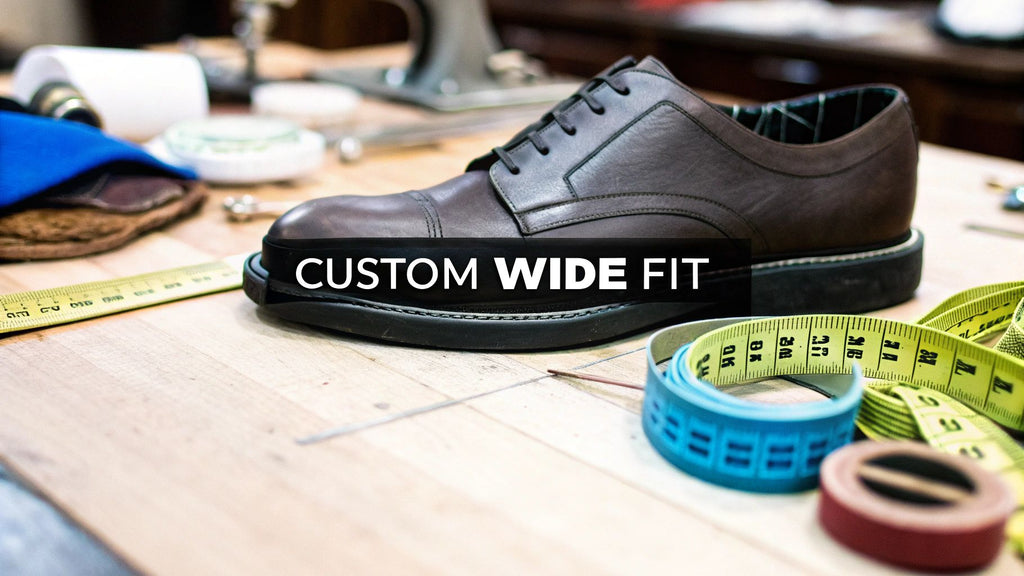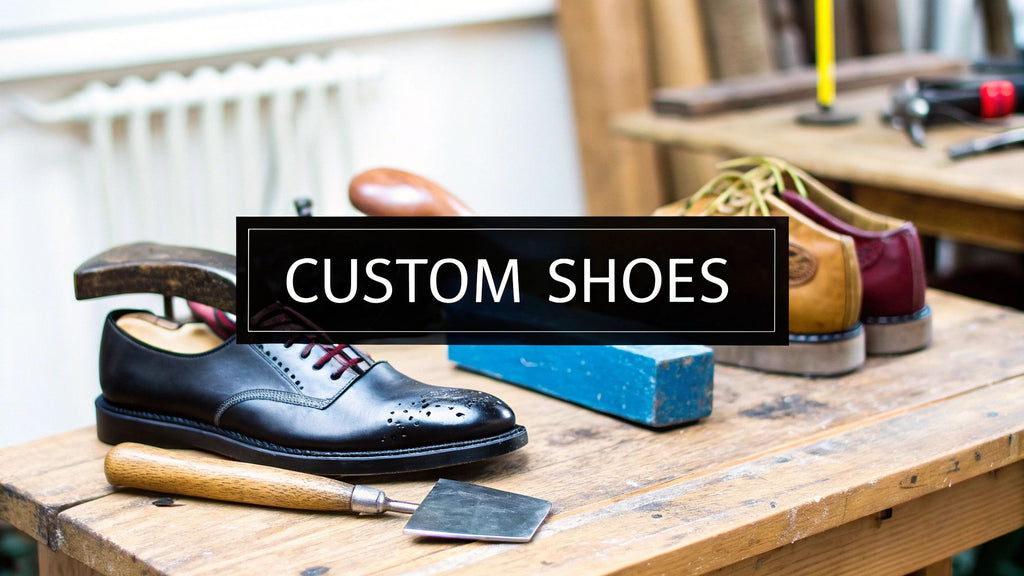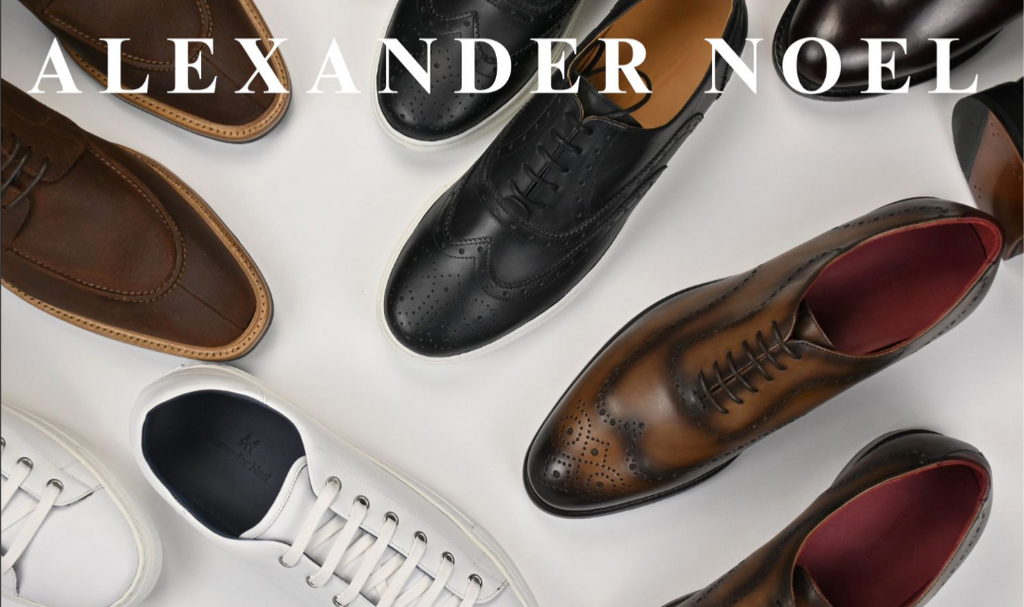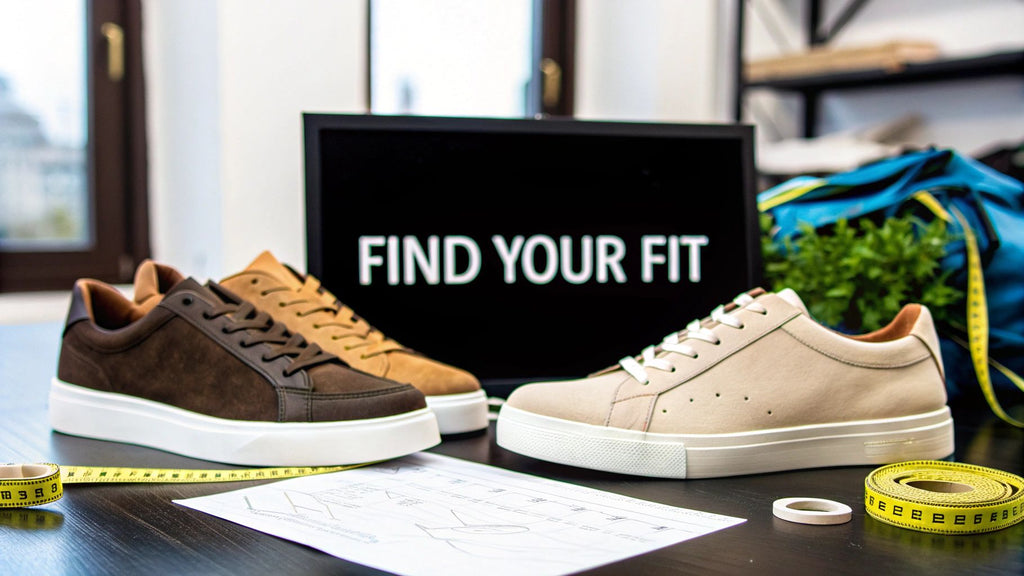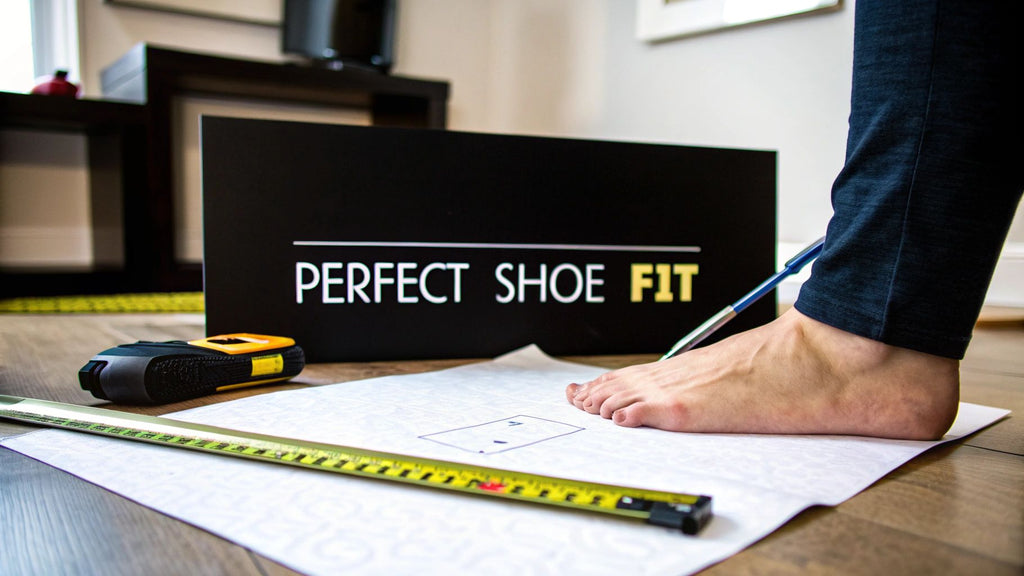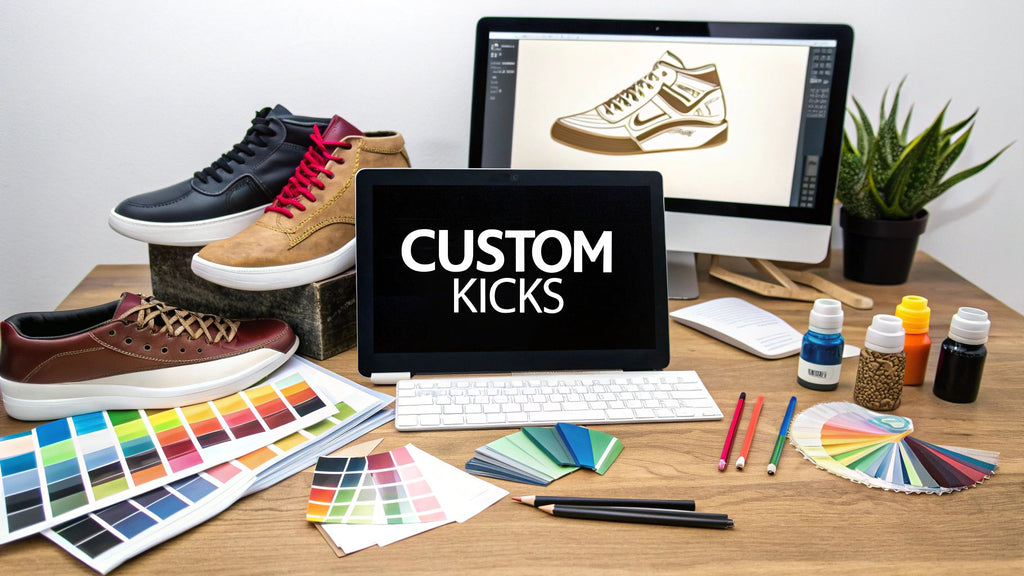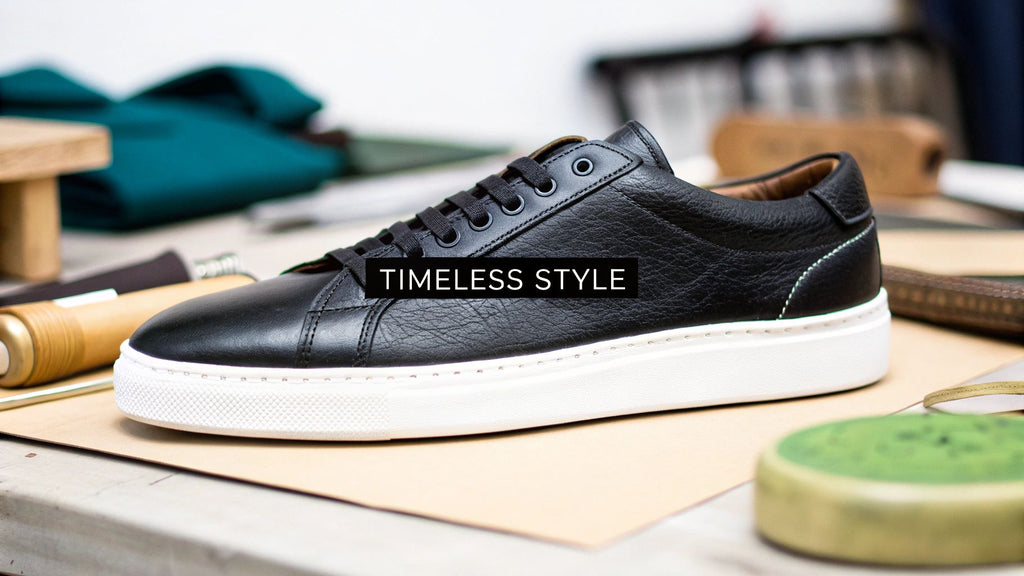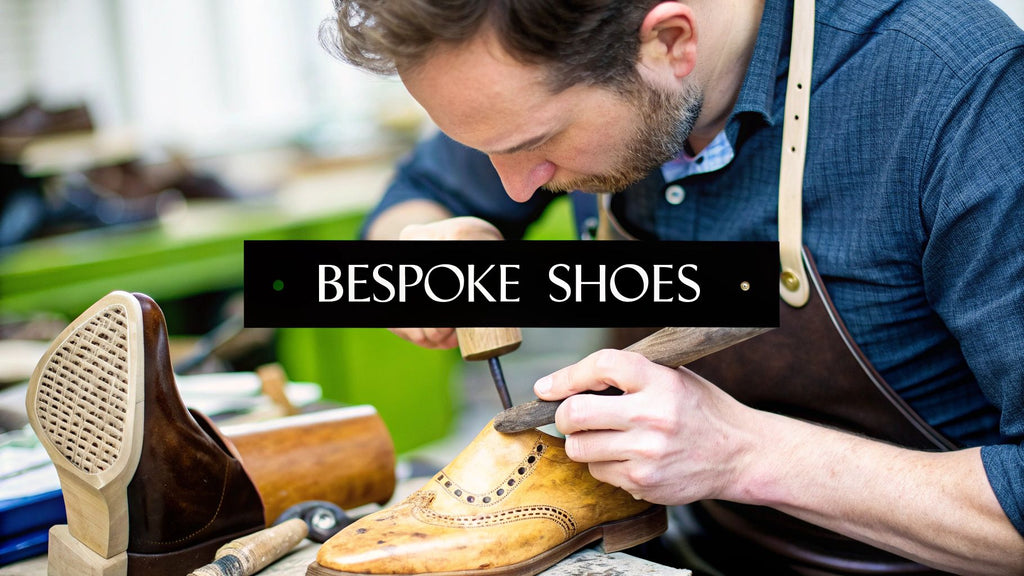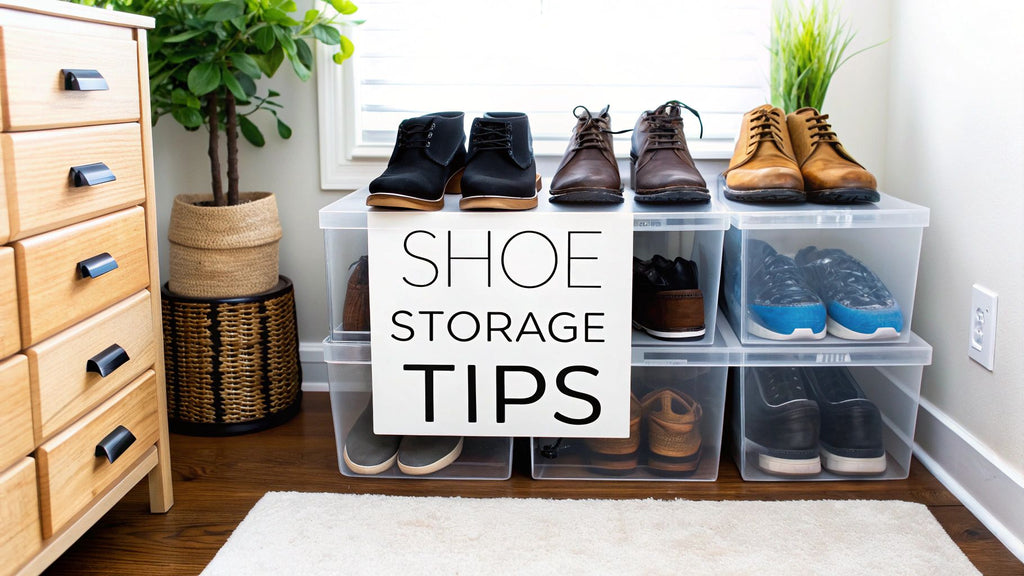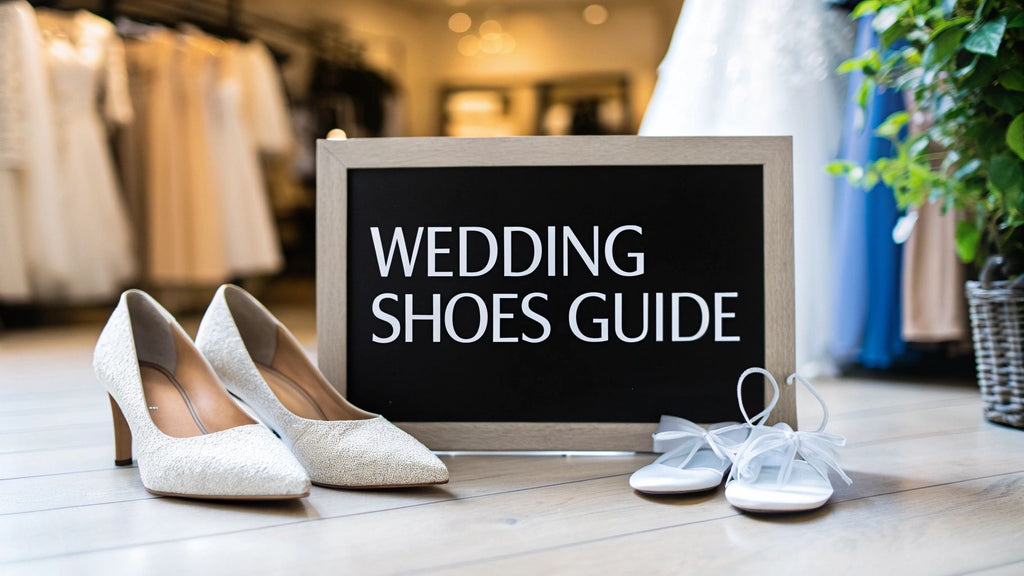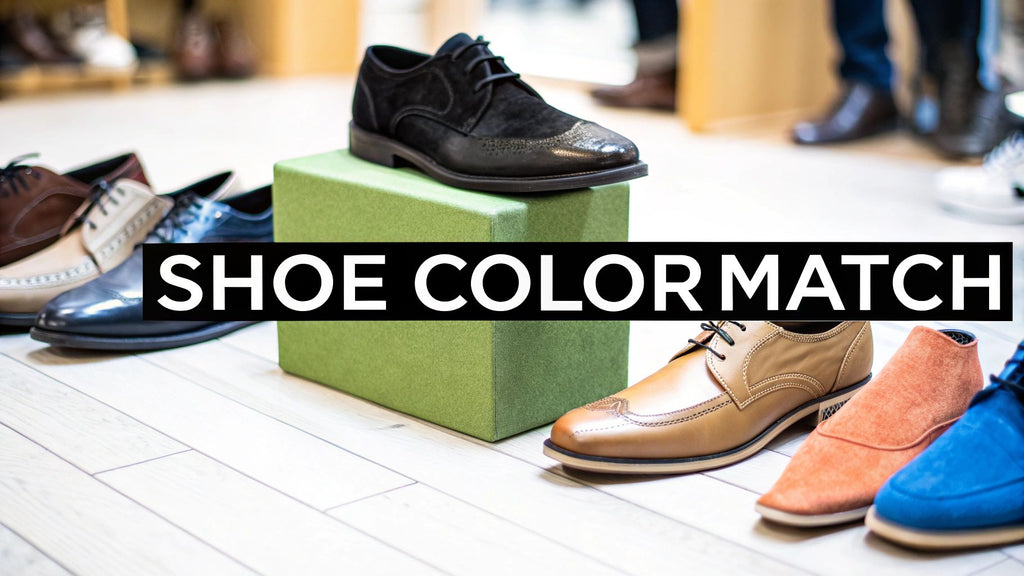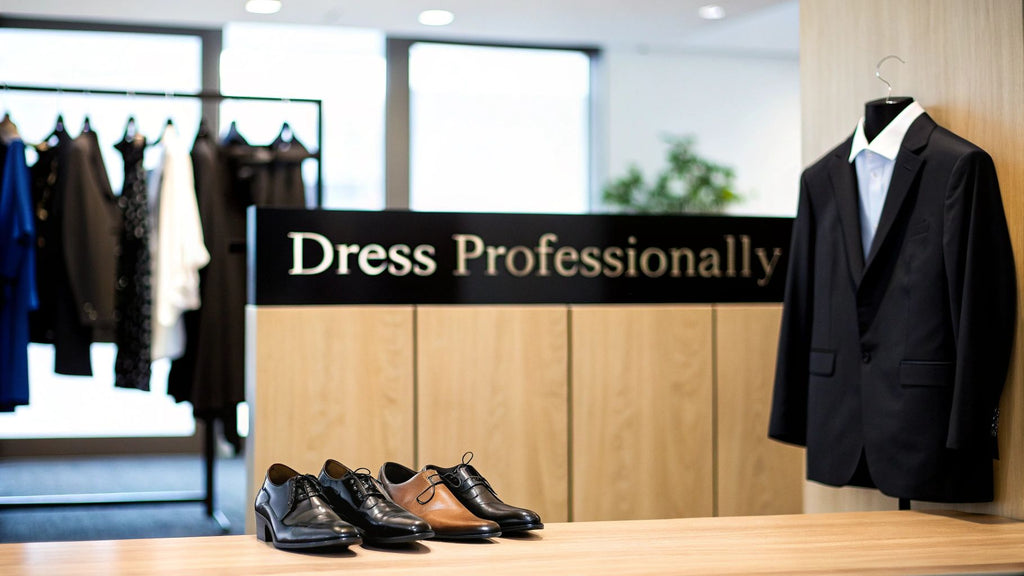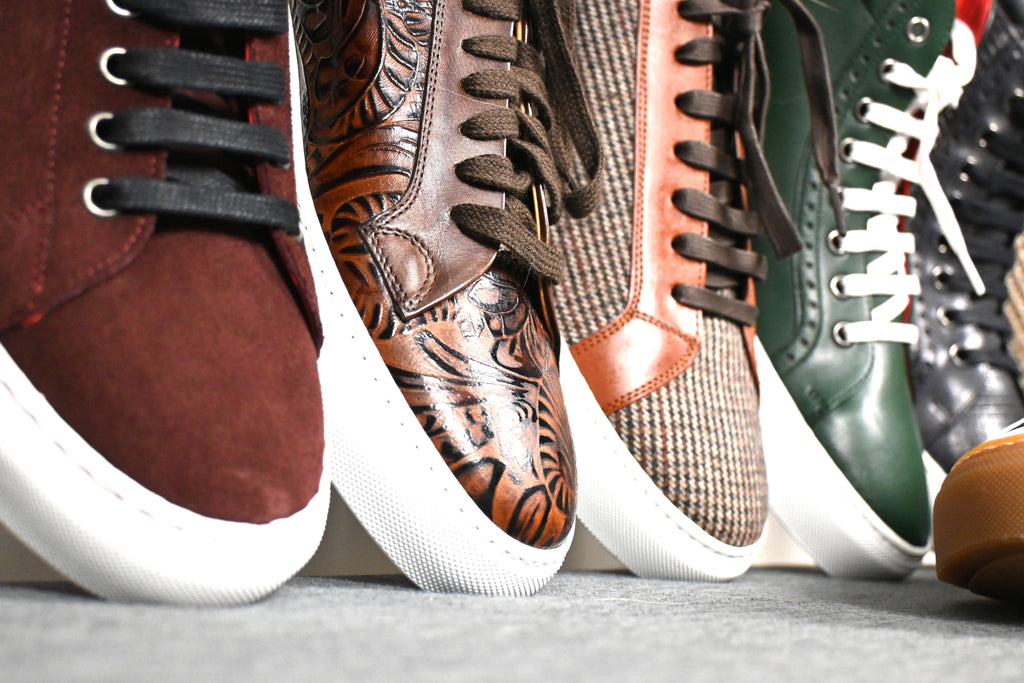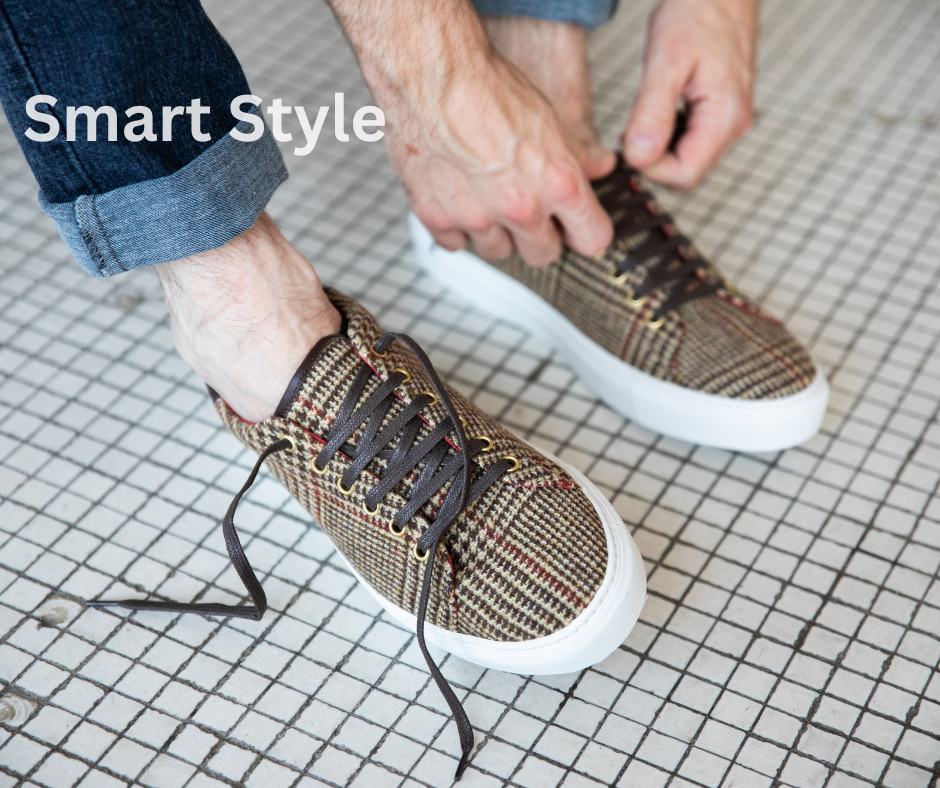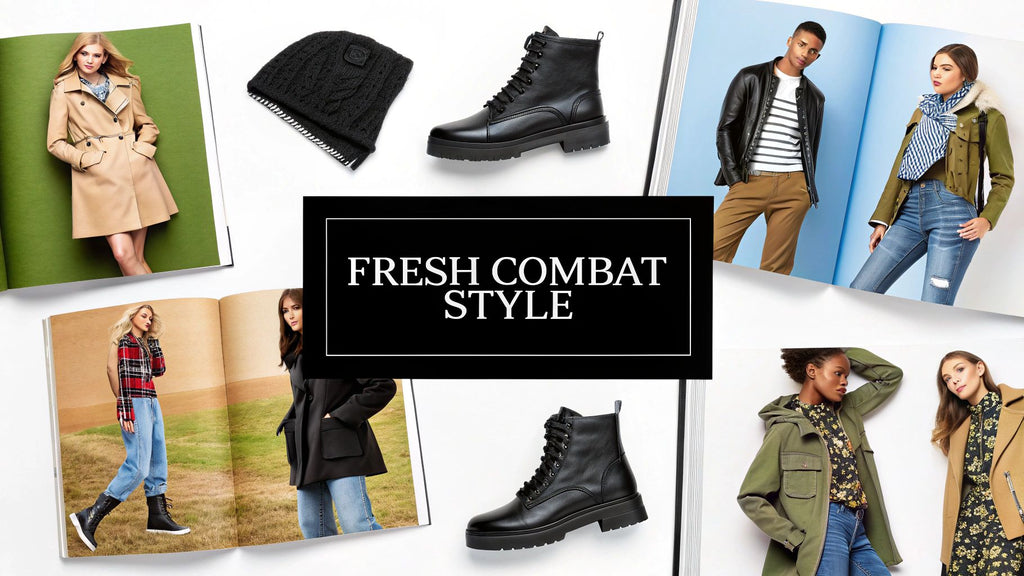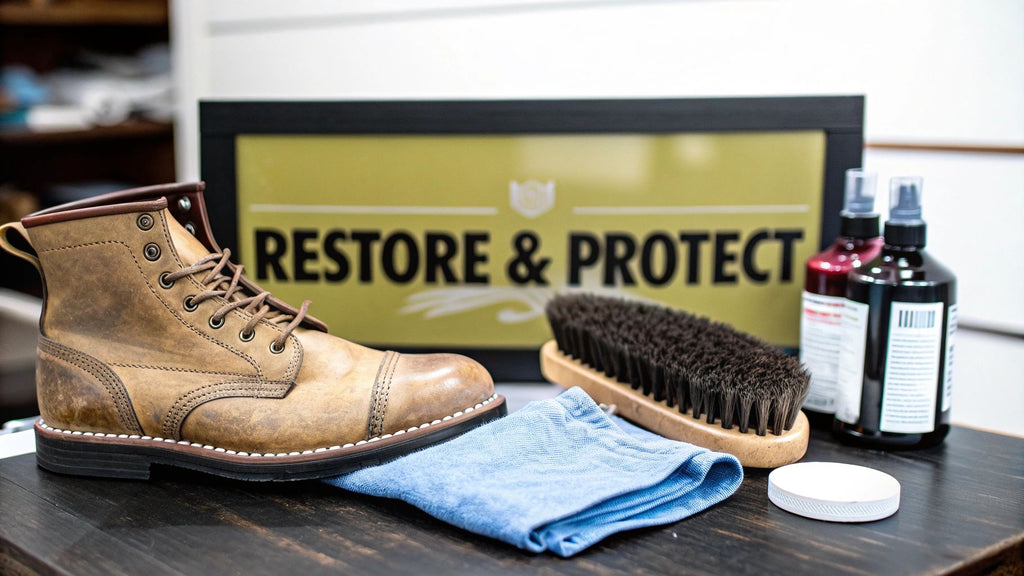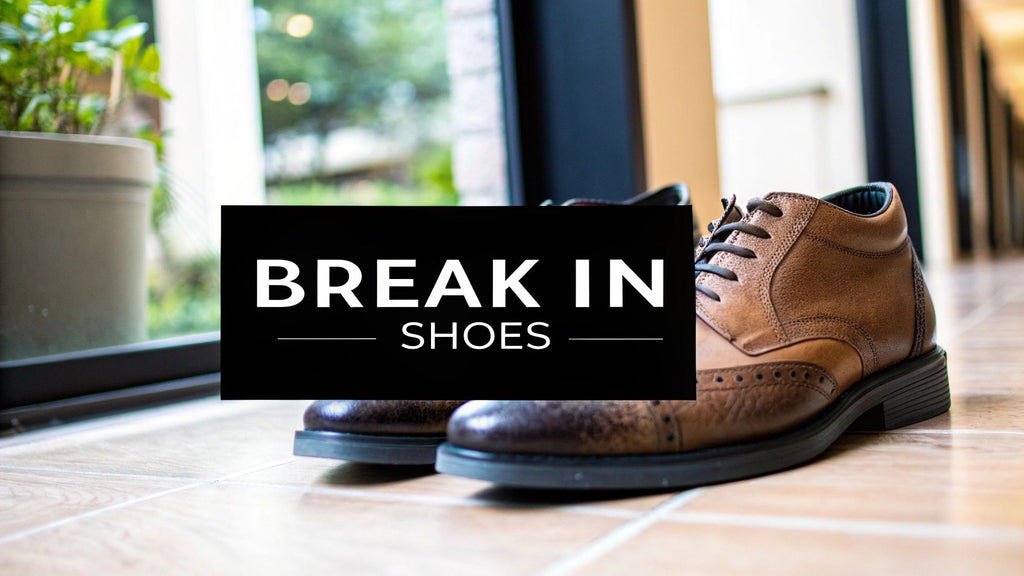
How to Break in New Shoes: A Guide to Achieving the Perfect Fit

The secret to successfully breaking in new shoes isn't a complicated trick. It's a gradual process rooted in patience and an appreciation for craftsmanship. Start by wearing your new shoes for short bursts, perhaps 1-2 hours at a time, exclusively indoors. Pairing them with thick socks provides a gentle, even stretch, allowing high-quality materials to mold to your feet without the agony of blisters.
This simple method is the best way to let premium materials adapt to your unique foot shape, turning a new purchase into a perfectly personalized pair.
Why Properly Breaking In Shoes Is Non-Negotiable
There’s nothing quite like the moment you unbox a new pair of handcrafted shoes. But the real journey to making them yours has just begun. This isn't just about dodging blisters; it’s about respecting the craftsmanship and ensuring your investment in quality pays off in unparalleled comfort and longevity.
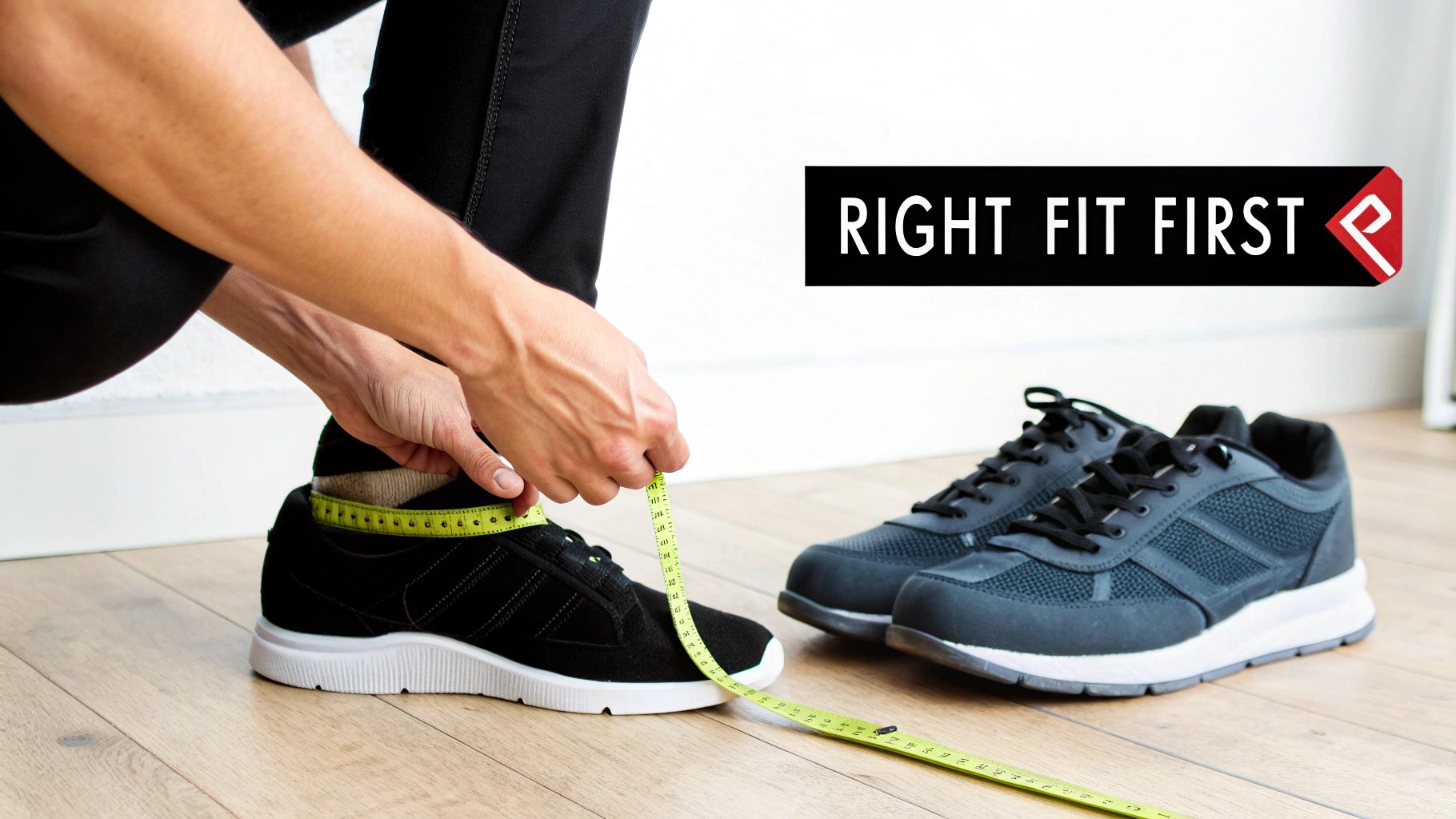
When you invest in premium footwear, like a custom pair from us at Alexander Noel, the break-in period is where the magic happens. It allows beautiful materials like full-grain leather to soften and meld perfectly to the unique shape of your feet. Think of it as the final, personalized step in the shoemaking process—the one that turns a great new shoe into an old favorite that feels truly made for you.
The Value of Patience
Putting in a little time now doesn't just build incredible comfort; it significantly extends the life of your shoes. This patient approach respects the integrity of both traditional and modern materials. A proper break-in ensures your footwear not only fits perfectly but also lasts for years to come.
Before you dive in, it’s worth understanding the core ideas behind a successful break-in. This table breaks down the essentials.
The Core Principles of Breaking In Shoes
| Principle | Action | Why It Works |
|---|---|---|
| Start Slow | Wear new shoes for only 1-2 hours indoors. | This allows your feet to adjust and the shoe material to soften without the stress of a full day's wear, preventing blisters and hot spots. |
| Add Bulk | Use thick socks during initial wears. | The added thickness creates a gentle, uniform stretch on the shoe, especially in snug areas, helping it conform to your foot's shape faster. |
| Listen to Your Feet | If you feel pain or a hot spot, take them off. | Forcing it will only lead to blisters and potential damage to the shoe's structure. Give your feet (and the shoes) a rest. |
| Be Consistent | Repeat the short-wear process over several days. | Consistency is key. A little bit of wear each day is far more effective than one long, painful session. |
This isn't about rushing the process. It's about working with the shoe to create a perfect fit that will last for years, honoring the artisan's skill.
The goal is to gently guide the shoe to fit you, not to force it into submission. Patience prevents damage and ensures the materials adapt correctly to your foot's anatomy, making every dollar of your investment count.
In a market where a staggering 21.9 billion pairs of shoes were sold in 2022 alone, getting the fit right from the start is more important than ever. Proper break-in techniques are key to feeling great in your new purchase and being truly satisfied.
A Proactive Approach to Foot Health
Breaking in your shoes correctly is a fundamental step in preventing foot pain and other issues down the road. It’s a proactive approach to your own well-being, much like the strategies for avoiding sports injuries where a little preparation goes a long way.
By respecting both the shoe and your foot, you build a foundation for lasting comfort and style.
Gentle At-Home Methods for Initial Comfort
The journey to breaking in new shoes starts right inside your own home. Let's forget that old, painful advice about just wearing them out and suffering through the inevitable blisters. A smarter approach will protect both your feet and your investment in quality footwear.
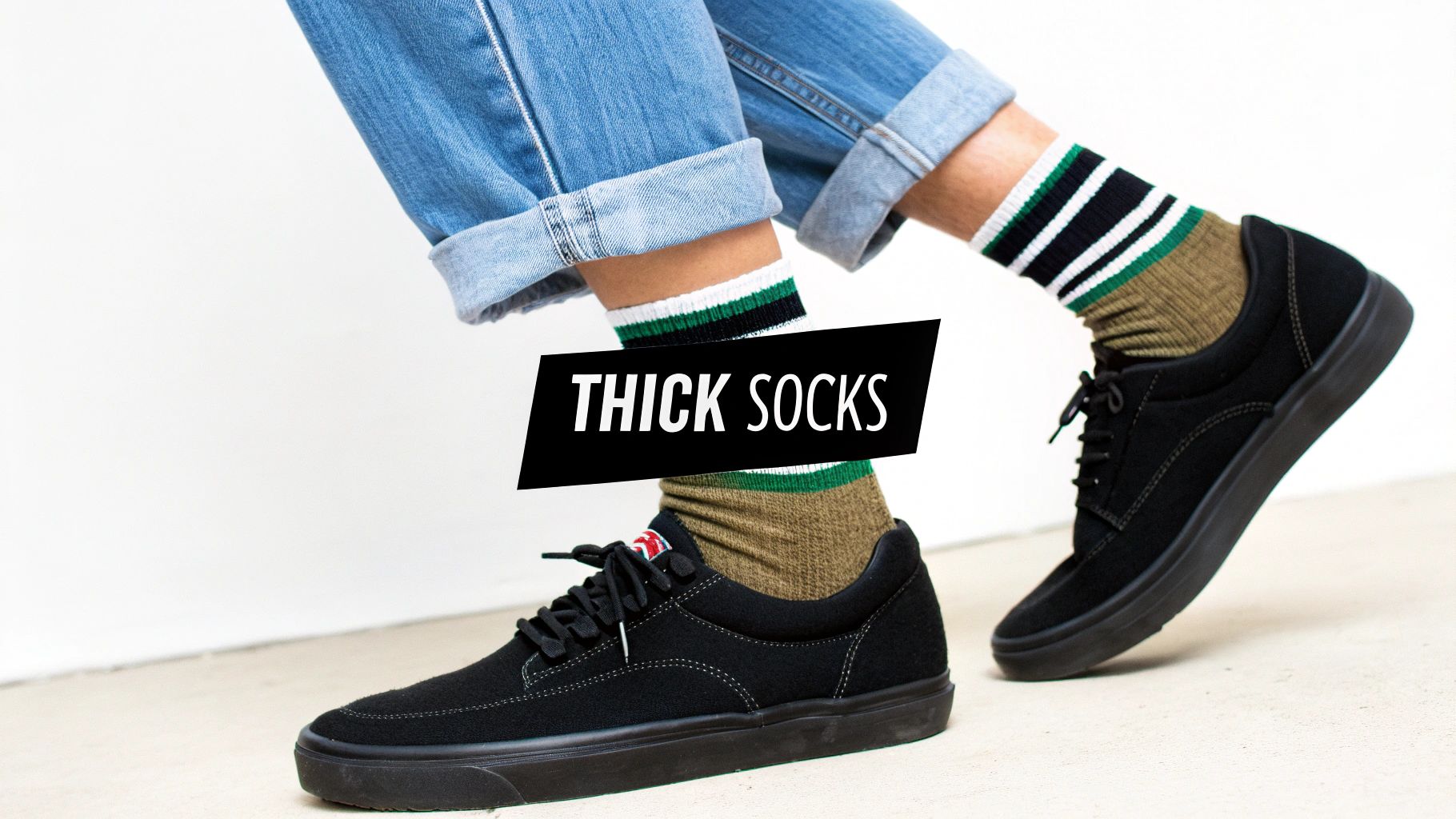
Start by wearing your new shoes for short, controlled periods. Think 30 to 60 minutes at a time while you're at your desk, making dinner, or just walking around the house. Consistency is the name of the game here—not duration. Short, repeated sessions give the shoe's materials time to adapt without causing you any real pain.
It’s also crucial to wear the same type of socks you plan on pairing with the shoes later. This simple step ensures the shoes mold to the real-world volume of your foot, stopping them from feeling too tight or loose down the road. It's a small detail that makes a huge difference.
The Critical Cool-Down Process
What you do after taking the shoes off is just as important as when you have them on. For any pair of premium footwear, sliding in a pair of quality wooden shoe trees is non-negotiable.
This isn't just about looking sharp in your closet; shoe trees are a functional necessity. They absorb lingering moisture from your feet—which is vital for the longevity of leather—and help the shoe hold its proper shape as it cools down and rests.
This one simple action works wonders. It helps to:
- Prevent deep creases from setting in the wrong spots.
- Support the shoe's structure so it doesn’t collapse or lose its form.
- Aid the material in settling correctly after being warmed and shaped by your foot.
Another gentle technique is to simply flex the shoes by hand. Before putting them on and right after taking them off, carefully bend and twist the shoe. Pay special attention to stubborn areas like the toe box and arch. This helps loosen up rigid spots without the full force of your body weight, making the next wear that much more pliable.
By adopting these at-home methods, you work with the shoe, guiding it patiently toward a custom fit. This is fundamental when you’ve invested in quality craftsmanship, like a bespoke pair from Alexander Noel, ensuring they become the perfectly comfortable shoes you first envisioned.
Even when you've nailed the sizing, a brand-new pair of shoes can have that one stubborn spot that just won’t quit. When you feel a pinch or a hot spot developing, it’s time for a more focused approach—one that targets the problem area without damaging the shoe. This is especially true when you're working with high-quality leather.
Targeted Heat for Tough Spots
A tried-and-true method involves a bit of gentle persuasion. First, pull on your thickest pair of socks and slide into the new shoes. Then, grab a hairdryer and carefully apply heat to the tight area for just 20-30 seconds.
While the spot is warm, be sure to flex and move your foot around. This combination of mild heat and movement is what encourages the leather fibers to relax and start molding to the unique shape of your foot. You’re guiding the material, not forcing it.
This principle of gradual adaptation is universal. True comfort always comes from a slow, steady break-in, whether for custom dress shoes or high-performance athletic wear. The sports footwear market report highlights how the entire industry, valued at over USD 110.91 billion in 2024, relies on materials that adapt to the wearer to boost performance and prevent injury.
A Visual Guide to Breaking In Your Shoes
For a clearer picture of how to pace yourself, this simple chart lays out a safe way to increase your wear time.

As the visual shows, patience is your best friend here. Incrementally adding wear time is the surest way to avoid the blisters and pain that can ruin the experience of a new pair of shoes.
If you’re still struggling with persistent issues after trying these home remedies, don’t be afraid to use a shoe stretcher or even visit a professional cobbler. Seeing a pro isn’t admitting defeat; it’s a smart investment to protect your footwear.
When you've invested in a custom pair of Alexander Noel shoes, a professional's touch can be the final step to achieving that perfect, made-for-you fit. It ensures the integrity of the materials and preserves the bespoke details, like the beautiful finishes you see when exploring the art of handmade patina.
Adapting Your Strategy for Different Materials
Not all shoes are created equal, and knowing how to break them in properly means understanding what you’re working with. The material your shoe is made from dictates your entire break-in strategy, from traditional leather to modern synthetics.
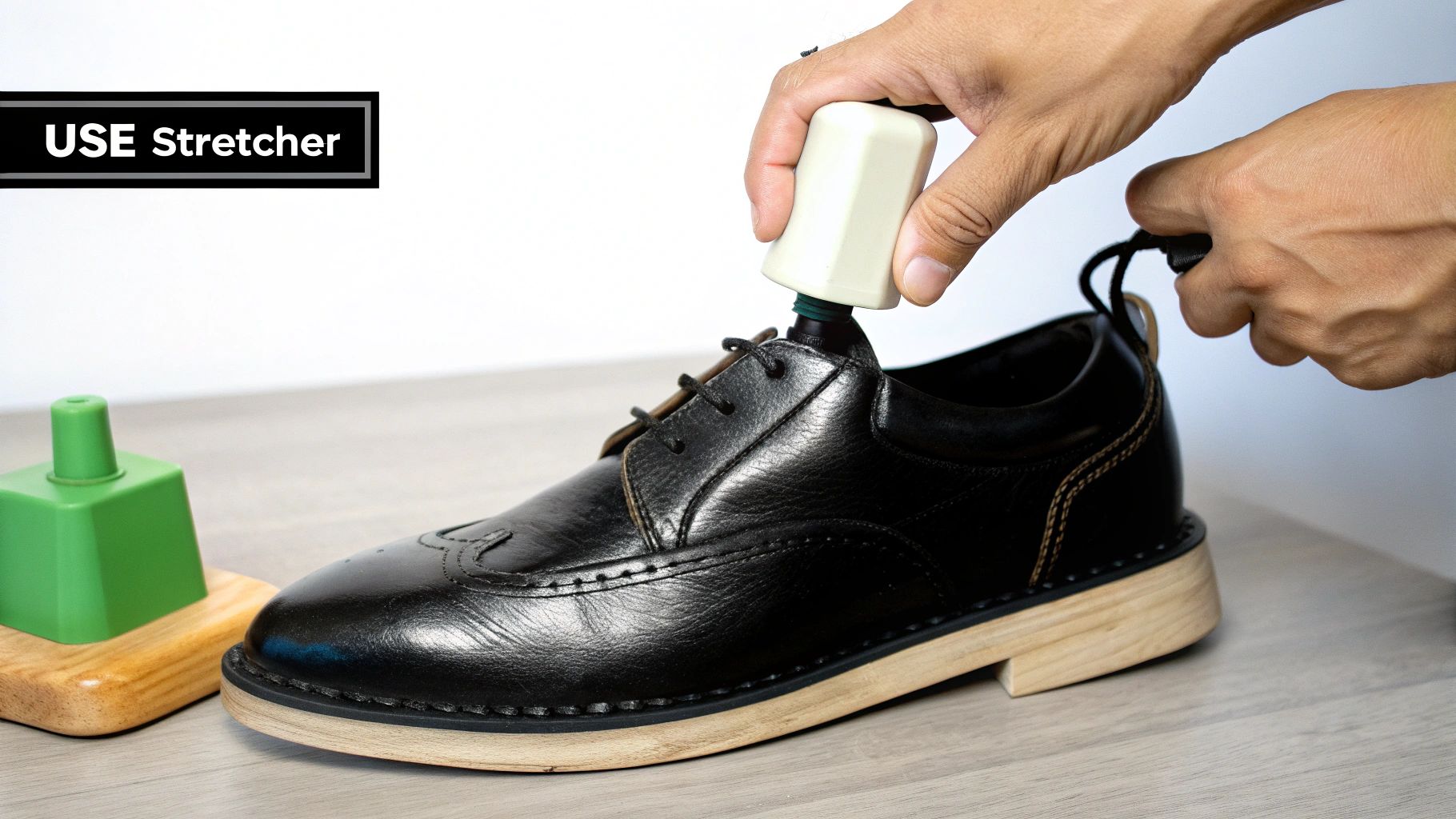
Full-grain leather, the hallmark of quality craftsmanship, demands a bit of patience and respect. Think of the break-in process as a gradual journey. You're allowing the leather’s natural fibers to slowly soften, warm up, and conform perfectly to your foot's unique shape.
Working with Leather
A quality leather conditioner is your best friend here. Applying just a small amount helps keep the material supple and pliable, which can speed up the molding process without resorting to any harsh methods that could damage the shoe.
This kind of focused care is especially important for durable, well-made footwear. For a deeper dive into what makes these shoes last so long, you can explore our ultimate guide to Goodyear welt construction, which explains the robust techniques behind premium boots and shoes.
Sneakers and Modern Fabrics
On the other hand, contemporary sneakers with knit or synthetic uppers often have a much shorter, more forgiving break-in period. This near-instant comfort is a major advantage of modern footwear, but a proper break-in still makes a difference.
With these modern materials, the focus shifts. It’s less about stretching the upper material and more about molding the insole and letting the cushioned sole adapt to your specific gait and pressure points.
This distinction is crucial when you step into the Alexander Noel Design Lab. Your choice of material—whether it's a classic Italian leather or an innovative fabric—directly impacts the future fit, feel, and break-in journey of your custom creation.
Ultimately, whether you're breaking in a pair of handcrafted leather boots or sleek modern sneakers, the principle is the same. You are personalizing the final stage of the shoe’s creation, making it uniquely yours through careful, gradual wear. This approach ensures you get the most comfort and life out of your investment.
Common Mistakes That Can Ruin Your New Shoes
https://www.youtube.com/embed/t8qi6v4wVWA
Knowing what not to do when breaking in new shoes is just as critical as knowing the right steps. A common mistake is wearing a beautiful new pair of shoes for a full eight-hour workday right out of the box.
This is the fastest way to get painful blisters. More than that, it can permanently crease your brand-new shoes in all the wrong places before they've even had a chance to mold to your feet. Patience really is a virtue here.
Another major pitfall is falling for aggressive DIY "hacks" found online. Let me be perfectly clear: never soak your leather shoes in water or try to freeze them with bags of ice. These extreme temperature tricks are a recipe for disaster and can cause irreparable harm to high-quality materials.
The Dangers of Damaging DIYs
Why are these methods so bad? Soaking high-quality leather strips it of its natural oils, leaving the material dry, brittle, and prone to cracking. Freezing is just as bad—as water expands into ice, it can split seams or even dissolve the strong adhesives holding the sole to the upper.
These risky shortcuts can completely destroy a shoe's structural integrity. To learn how to care for your footwear properly and safely, our The Ultimate Shoe Care Guide from Alexander Shoe Store is full of professional advice that won't damage your investment.
Preserving Quality and Craftsmanship
When you choose a pair of high-quality shoes—especially a custom-designed pair from Alexander Noel—you're investing in superior materials and artisan craftsmanship from our global partners. The goal is to gently guide the shoe to conform to your foot, creating a truly personalized fit over time.
Forcing the shoe into submission with harsh techniques risks destroying the very quality you paid for. The breaking-in process should be a partnership between your foot and the footwear, not a battle.
By avoiding these common mistakes, you protect your investment and honor the skill that went into making your shoes. A little bit of patience is all it takes to transform a beautiful new pair into a perfectly comfortable, long-lasting favorite.
Your Questions Answered by Footwear Experts
Even with the best game plan, a few questions always come up when you're breaking in a new pair of handcrafted shoes. Let's walk through some of the most common concerns we hear from our community, so you can achieve that perfect, personalized fit with total confidence.
How Long Should It Take to Break In New Leather Shoes?
For a high-quality pair of leather shoes, you're typically looking at a break-in period of two to four weeks. This isn't a race, though. The real key here is patience and consistency.
Start by wearing them for just an hour or two at a time around your house. As they begin to soften and feel more comfortable, you can gradually wear them for longer stretches. This slow-and-steady approach gives the leather time to mold to the unique contours of your feet without causing pain or putting stress on the shoe itself.
It's worth repeating: this process should never be painful. A snug feeling is one thing, but sharp pain or pinching is your foot's way of telling you to stop. Take the shoes off, give your feet a break, and try again tomorrow for a shorter time.
Can I Use a Shoe Stretcher on My New Alexander Noel Shoes?
Absolutely. A good-quality wooden shoe stretcher is a fantastic, safe tool for this exact purpose. We often recommend it for targeting very specific tight spots, like across the widest part of your foot or to create a little extra room over a bunion.
The trick is to be gentle. Insert the stretcher, give it a few turns, and then leave it for about 8 to 12 hours. Try the shoe on again. This gradual, controlled pressure is much safer for the shoe's construction than more aggressive tactics like freezing them, and it will preserve the beautiful materials we use.
Is It Normal for My Feet to Hurt During the Break-In Period?
While a certain amount of snugness is expected with new shoes, figuring out how to break in new shoes should never involve real, actual pain.
If you feel a sharp pinch, a persistent ache, or the start of a blister, your body is sending a clear signal. Take the shoes off immediately. Forcing your way through it will only lead to sore feet and a bad relationship with your beautiful new shoes.
At Alexander Noel, we believe true luxury is found in a perfect, comfortable fit. The time you invest breaking in your handcrafted shoes is really the final, personal step in their creation—transforming them from a new pair into your pair.
Ready to find footwear that feels like it was made just for you? Design your perfect pair today.


